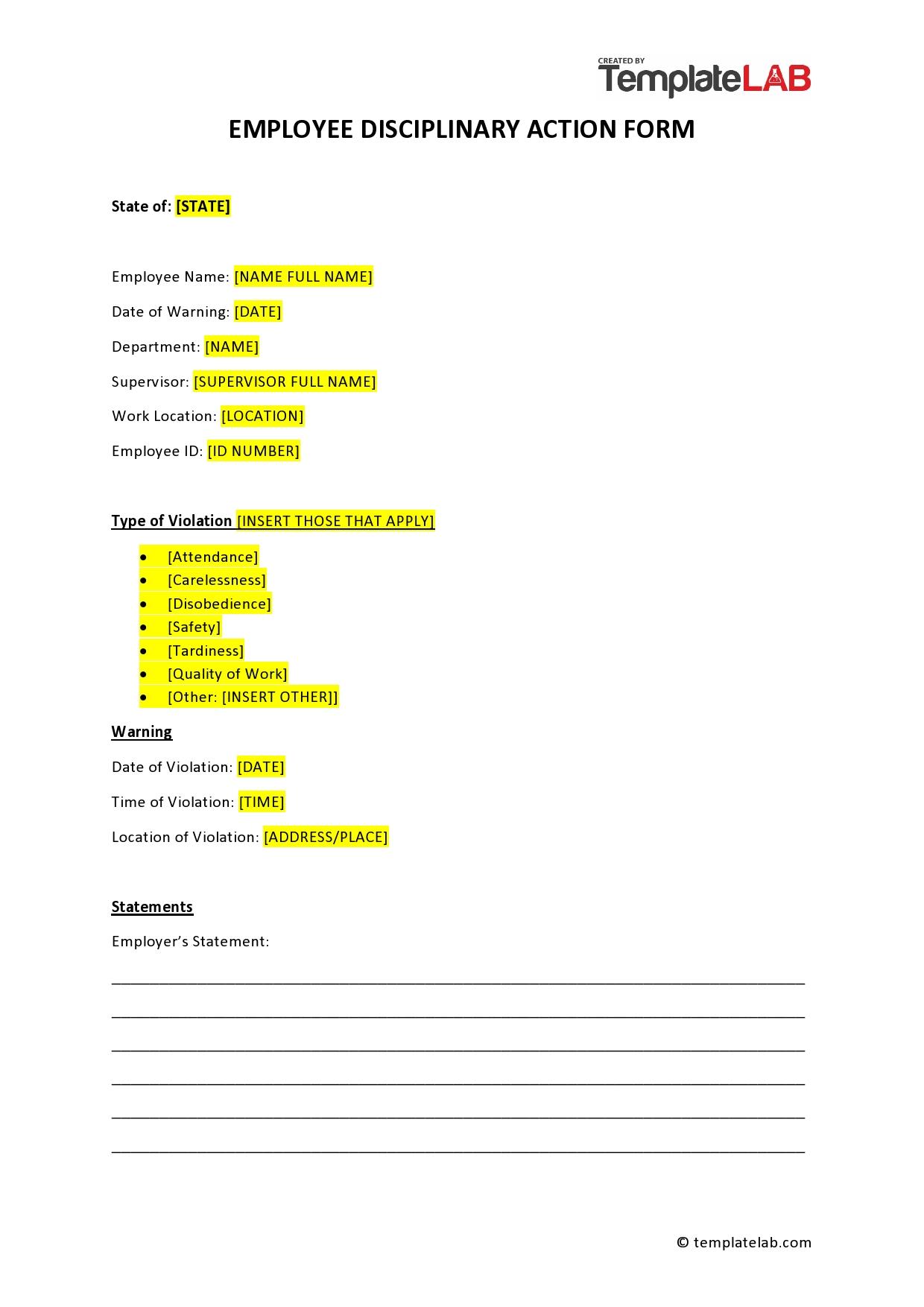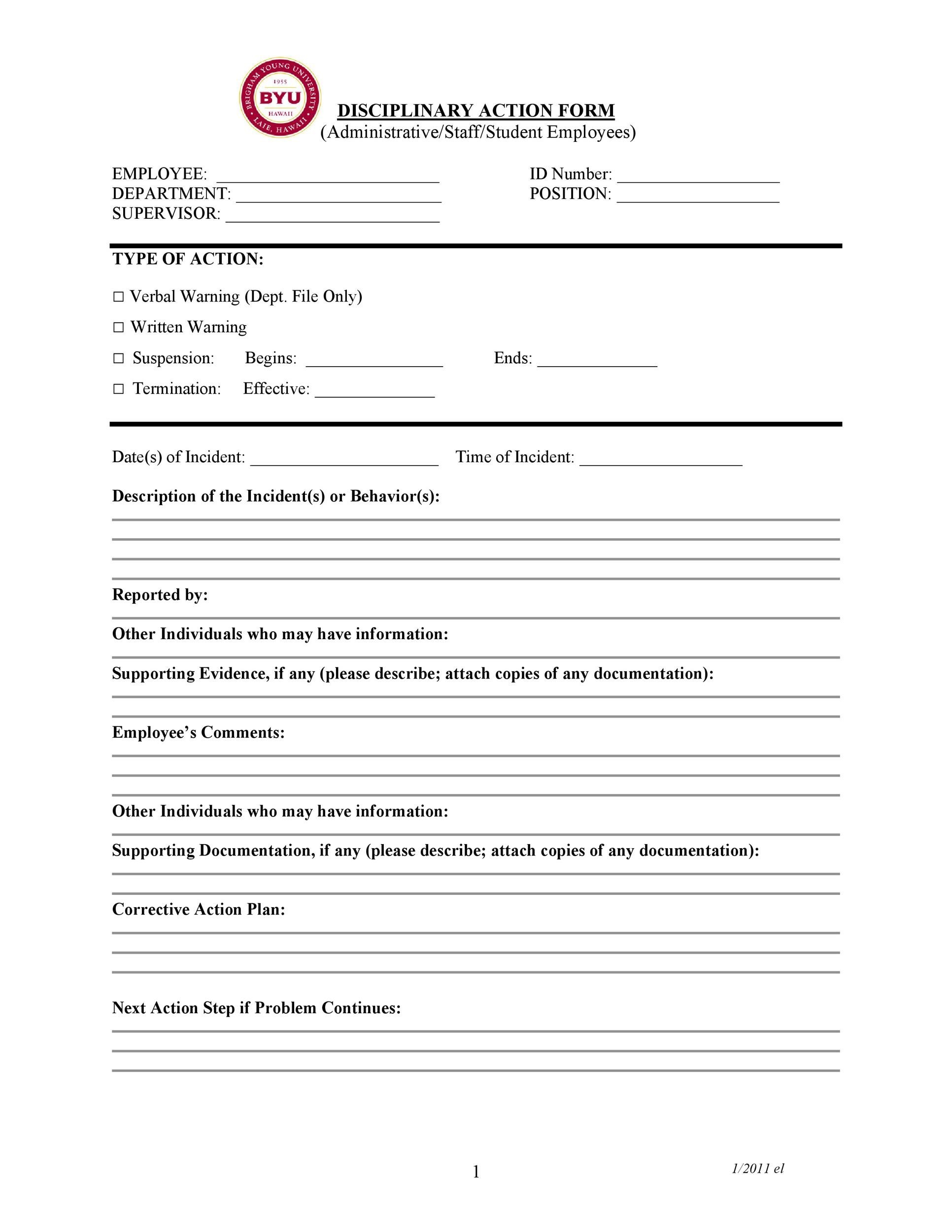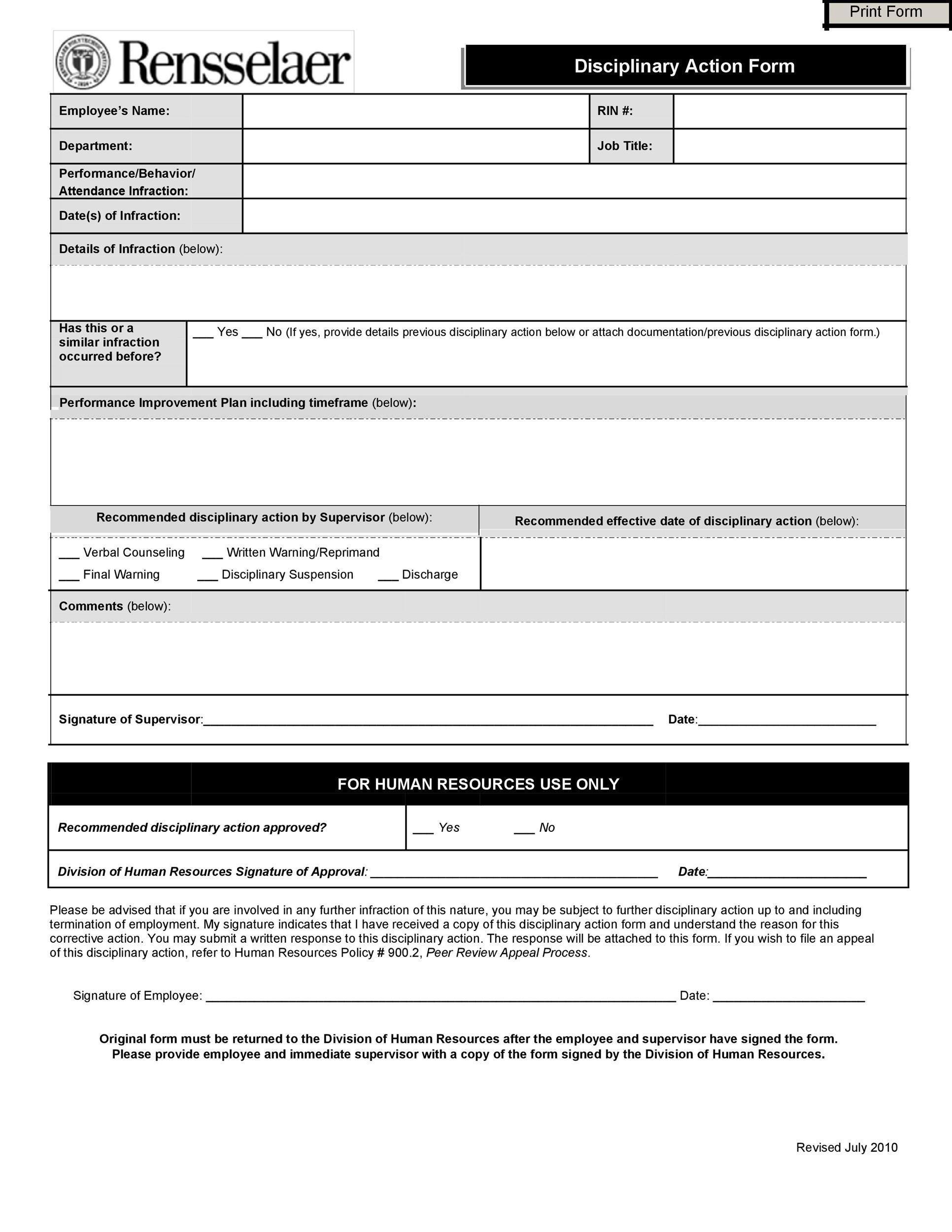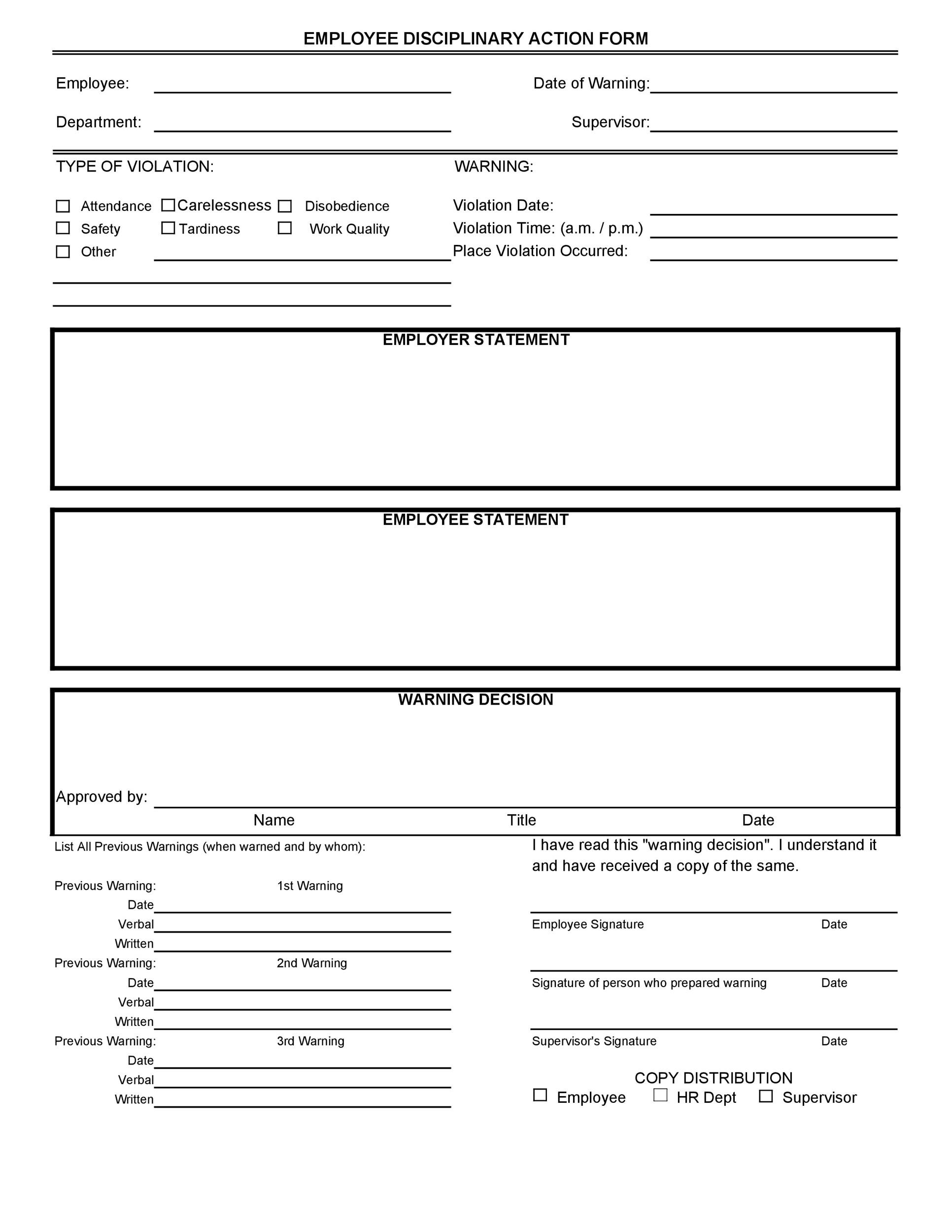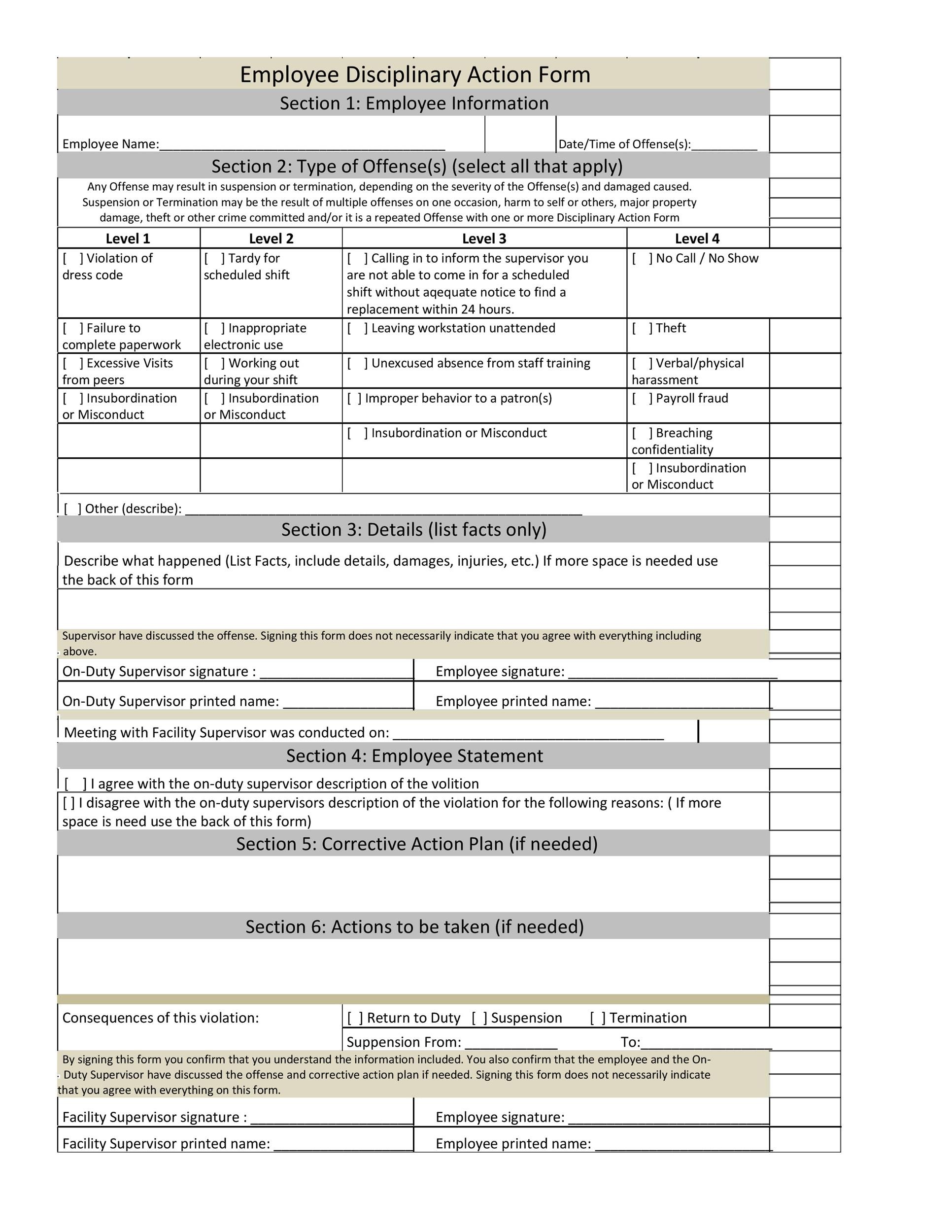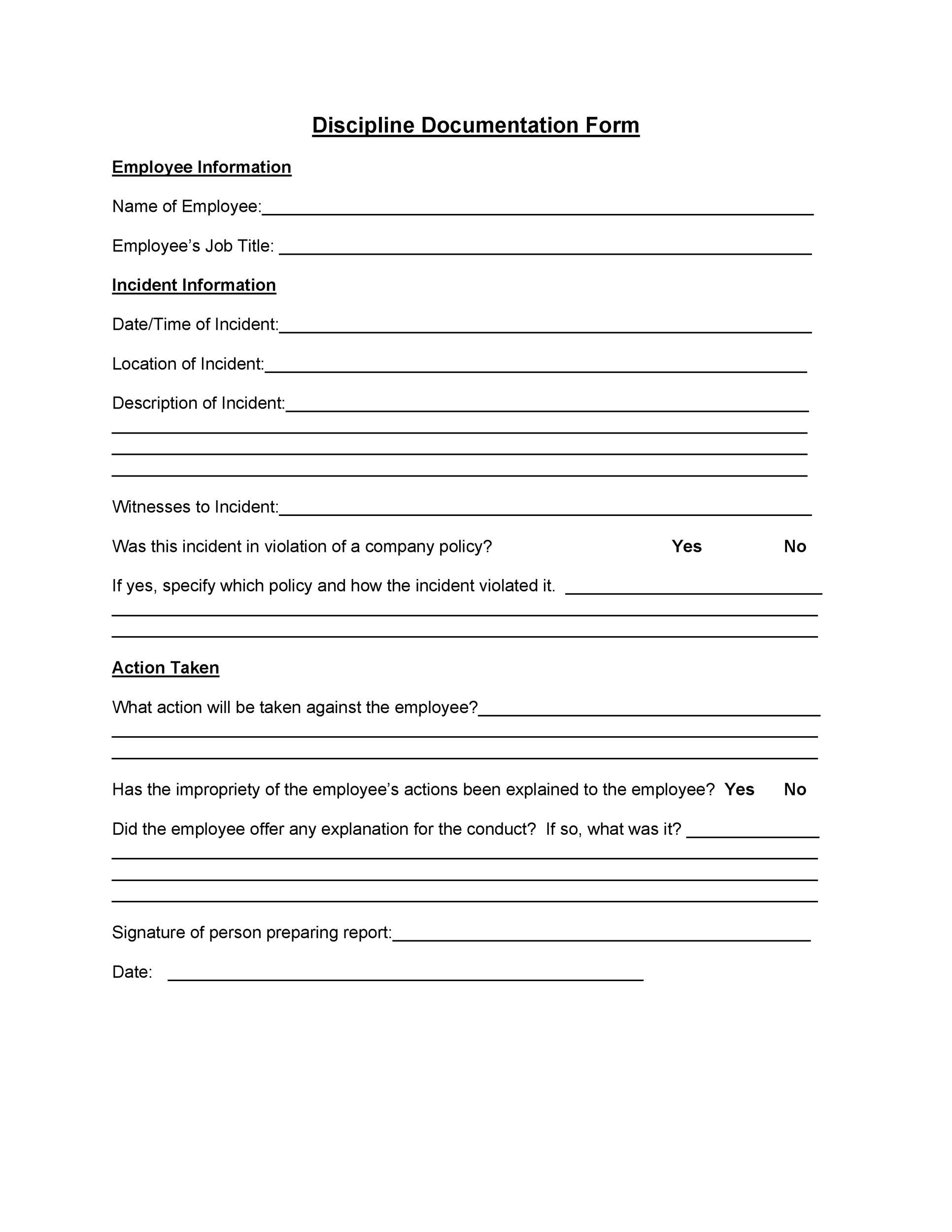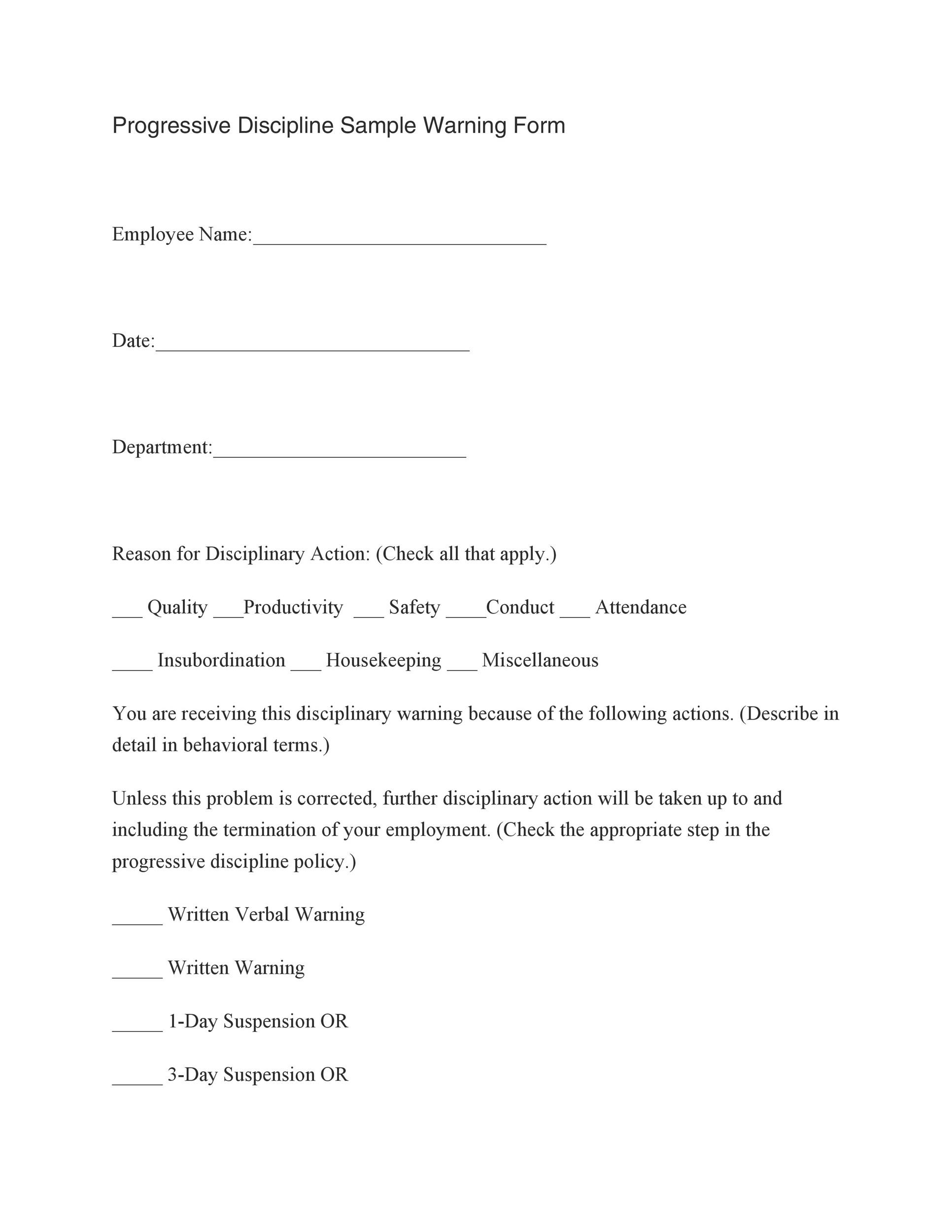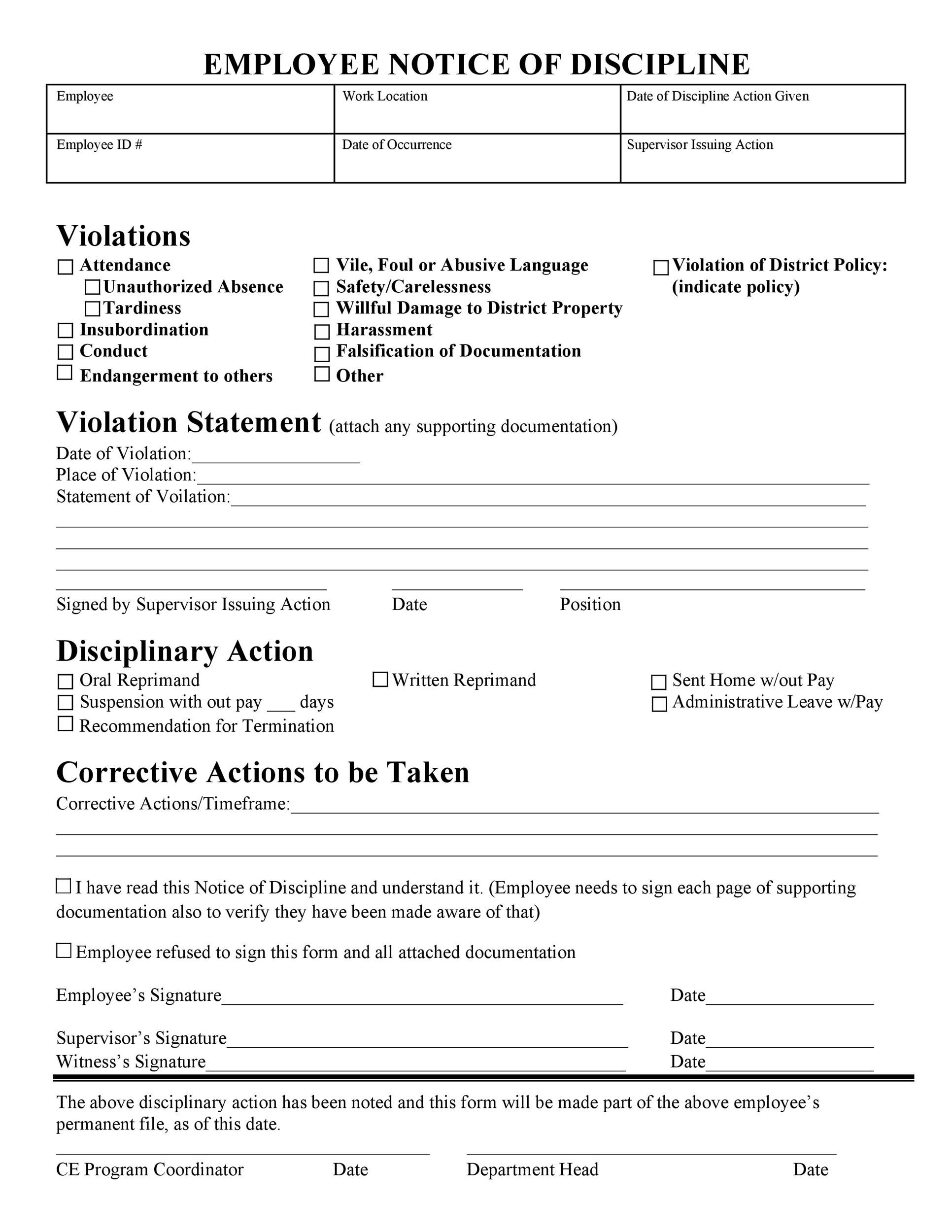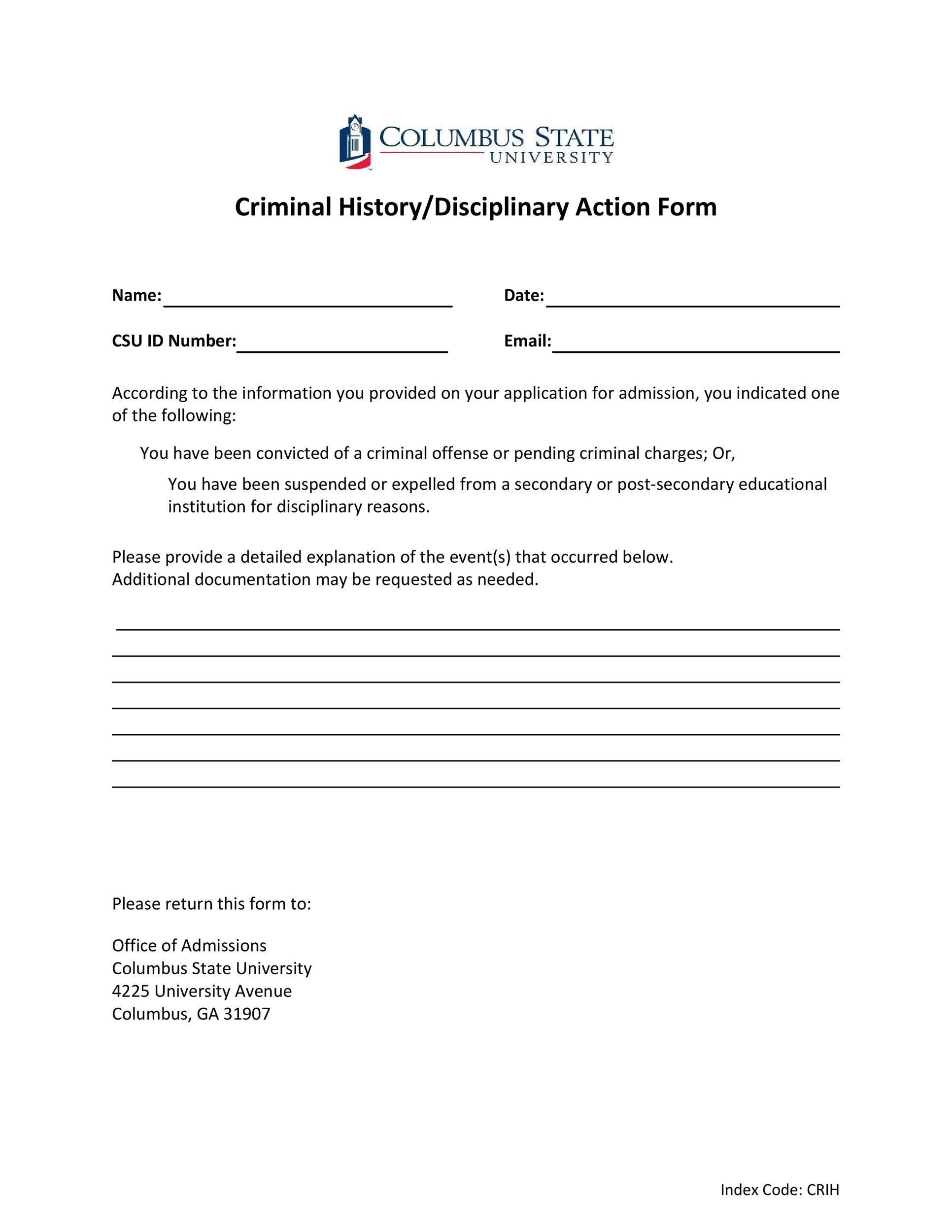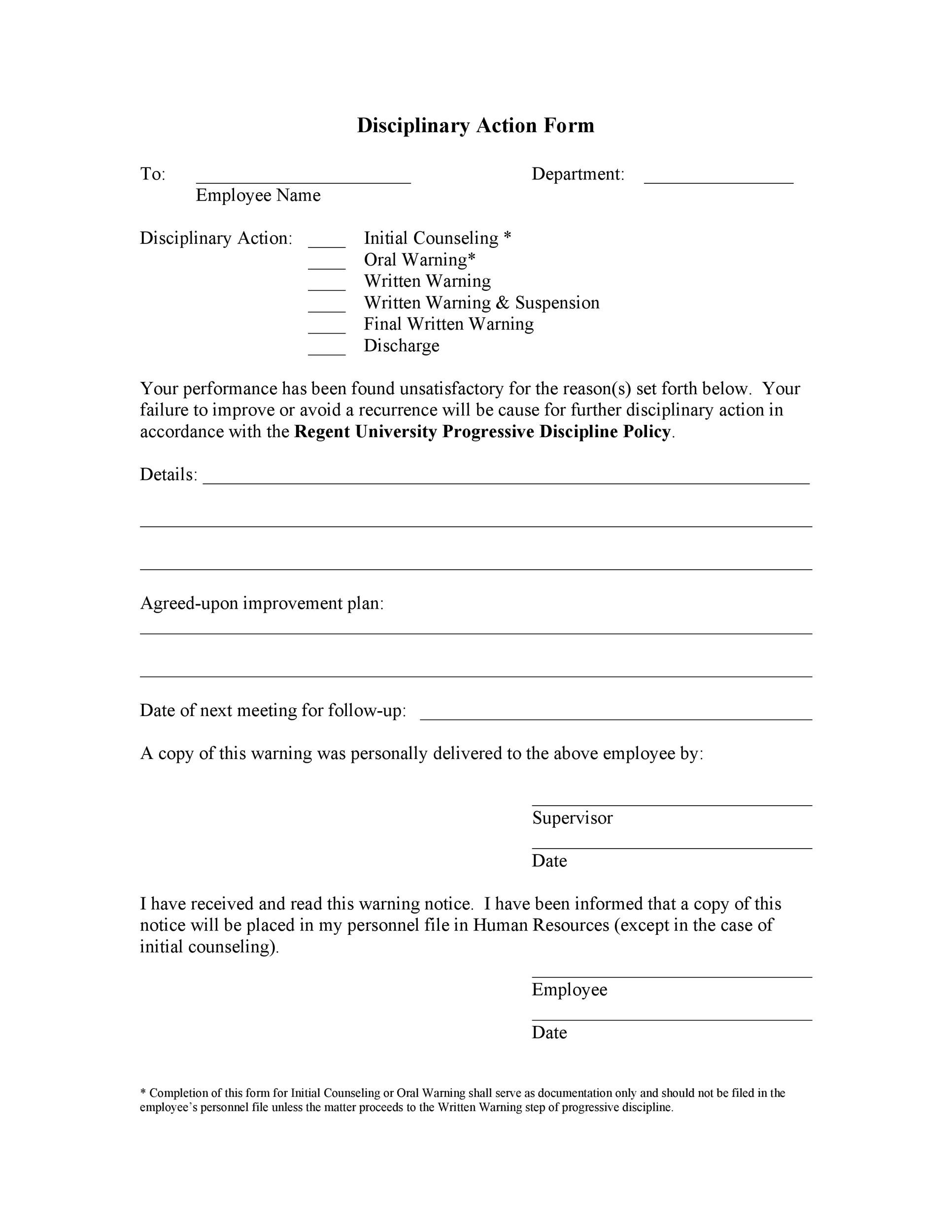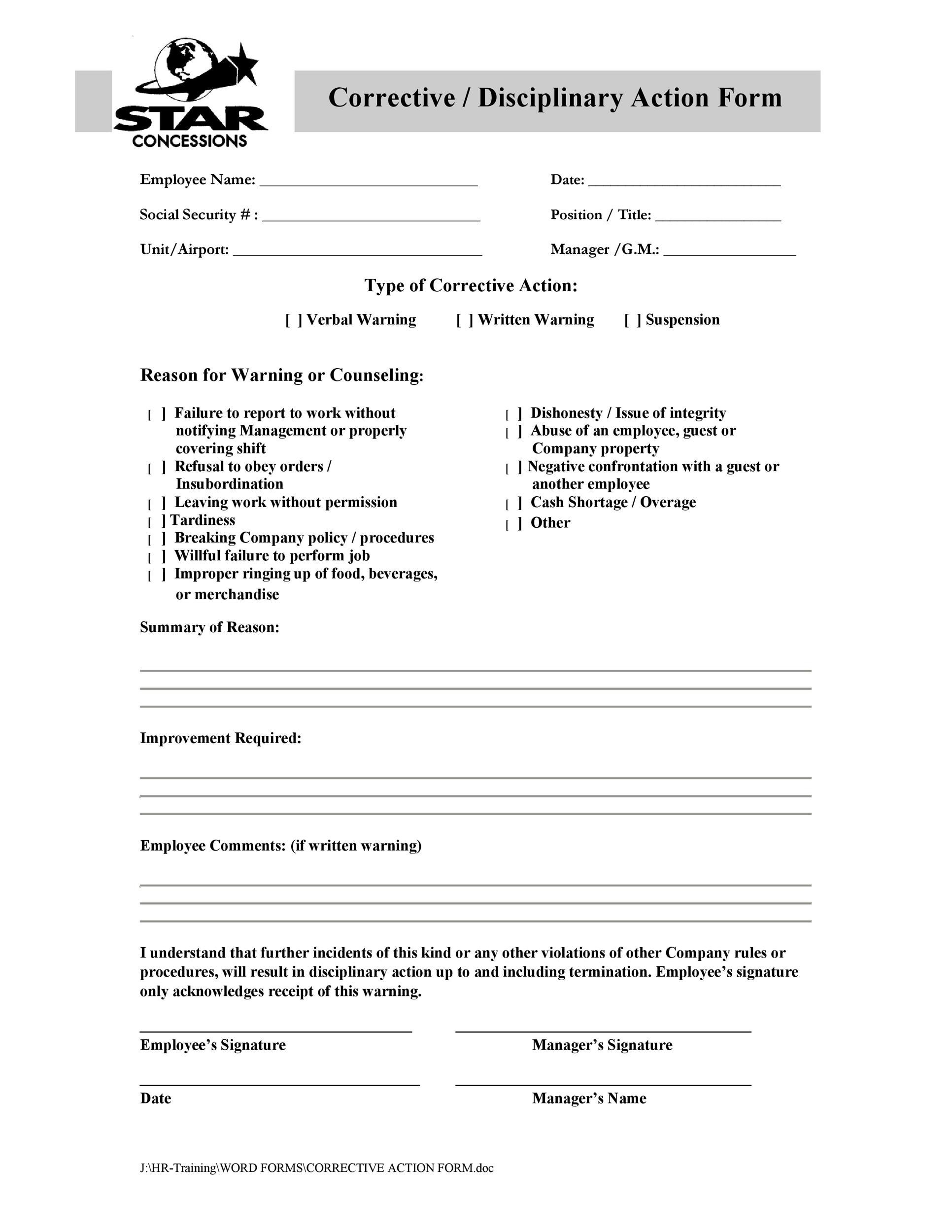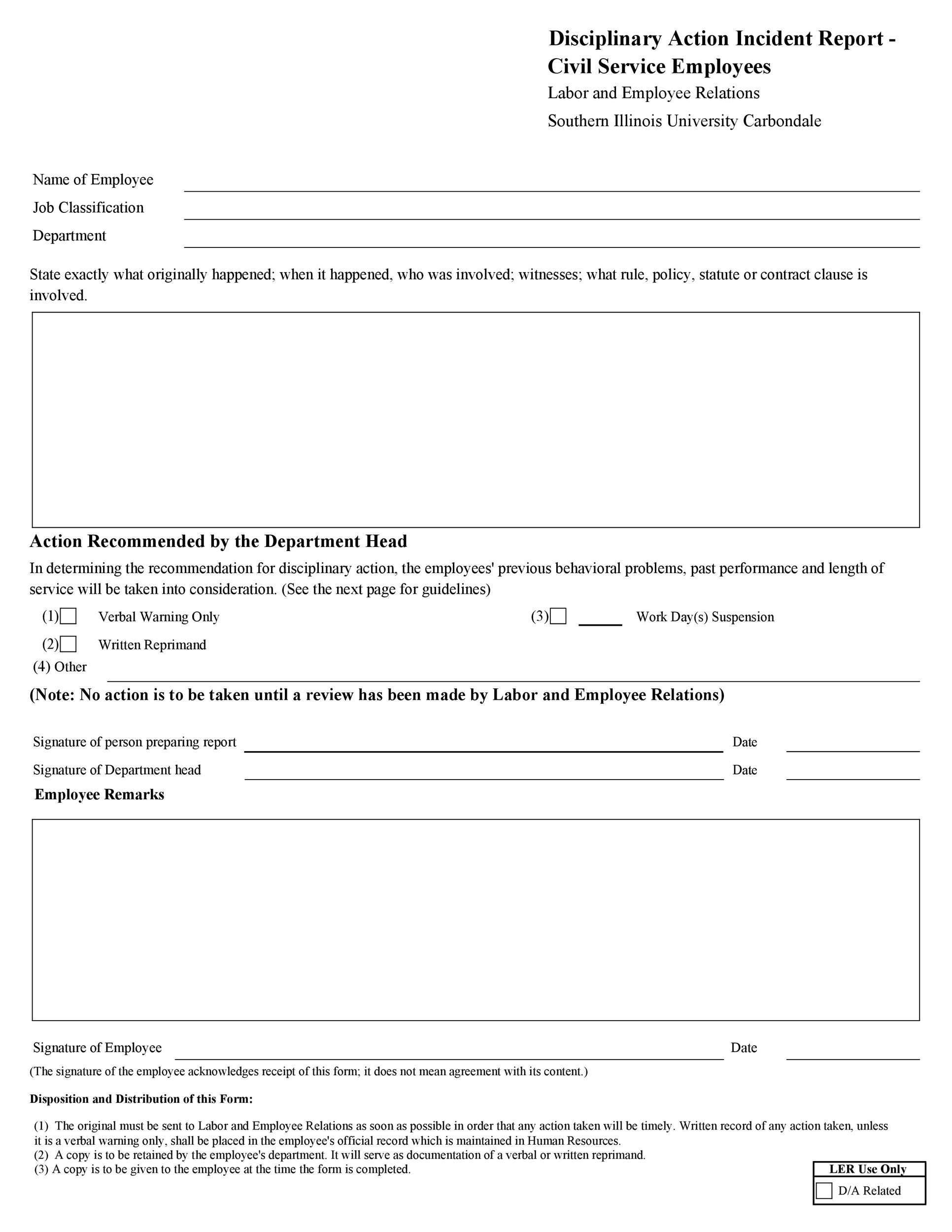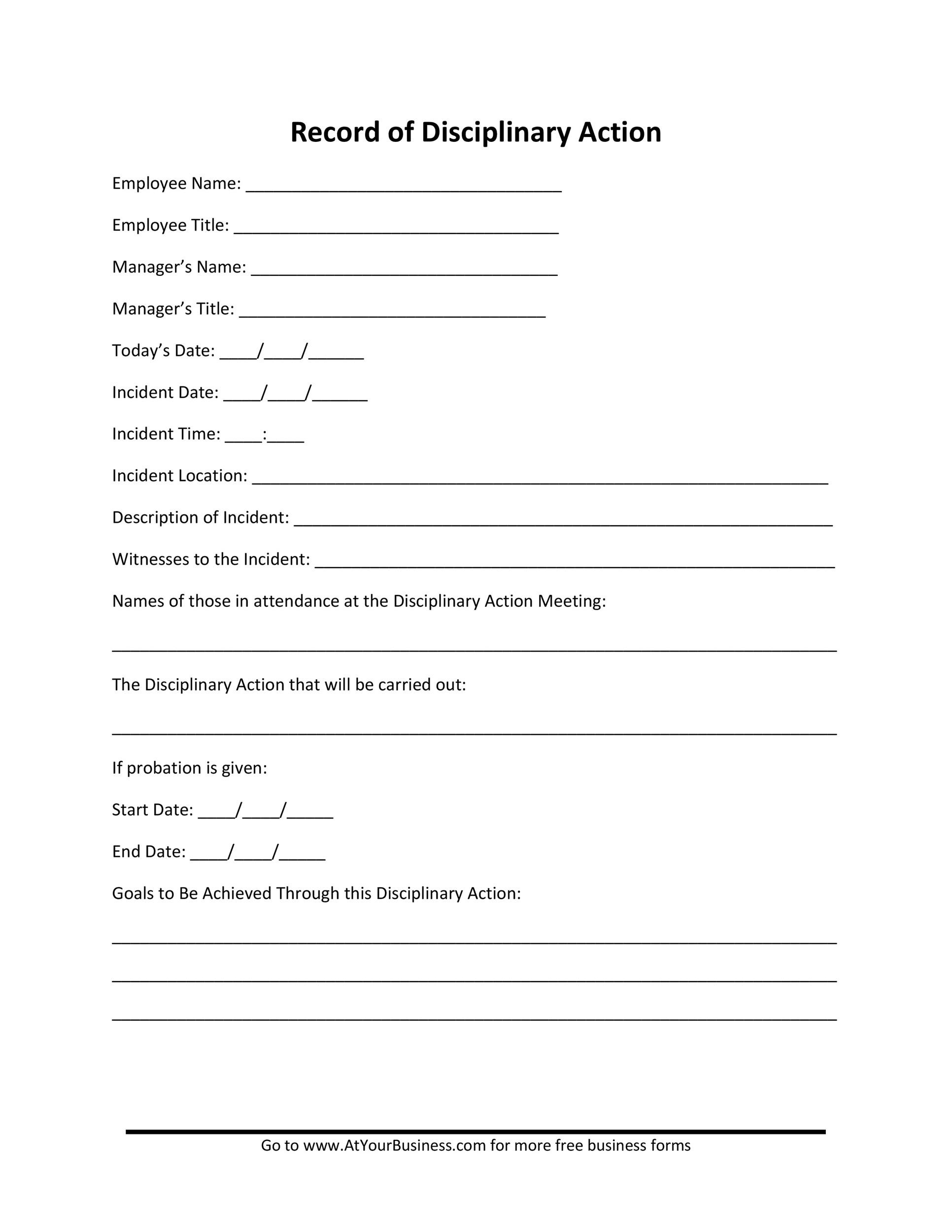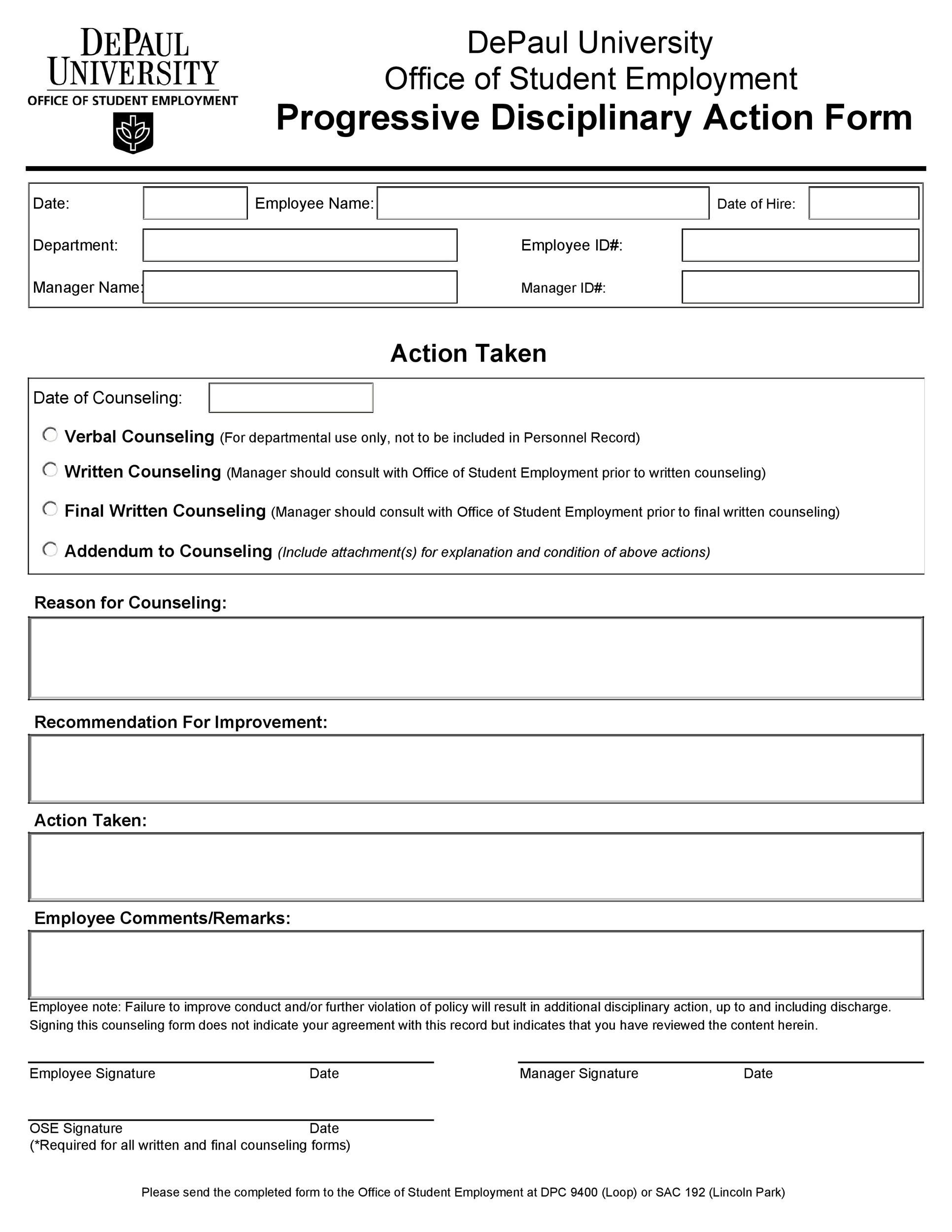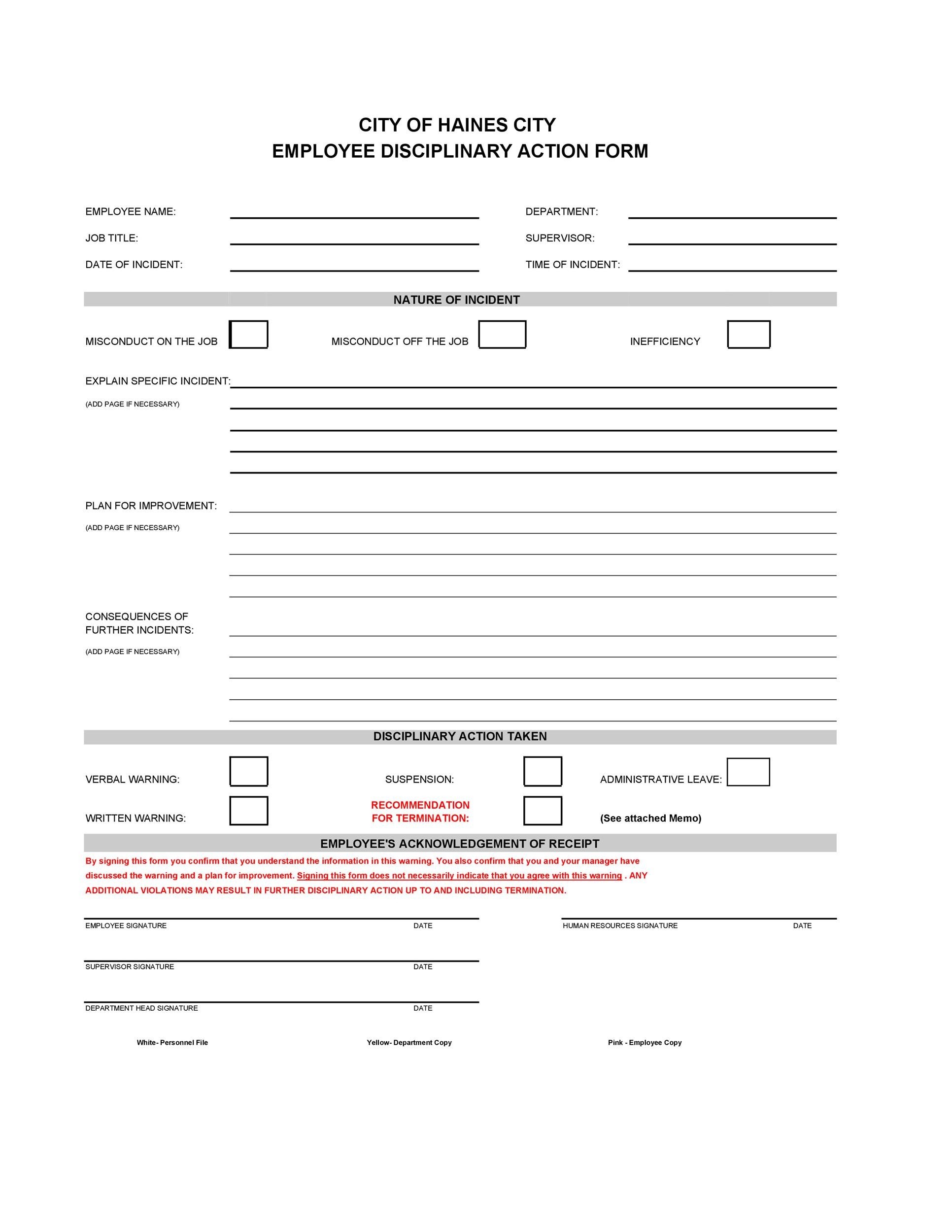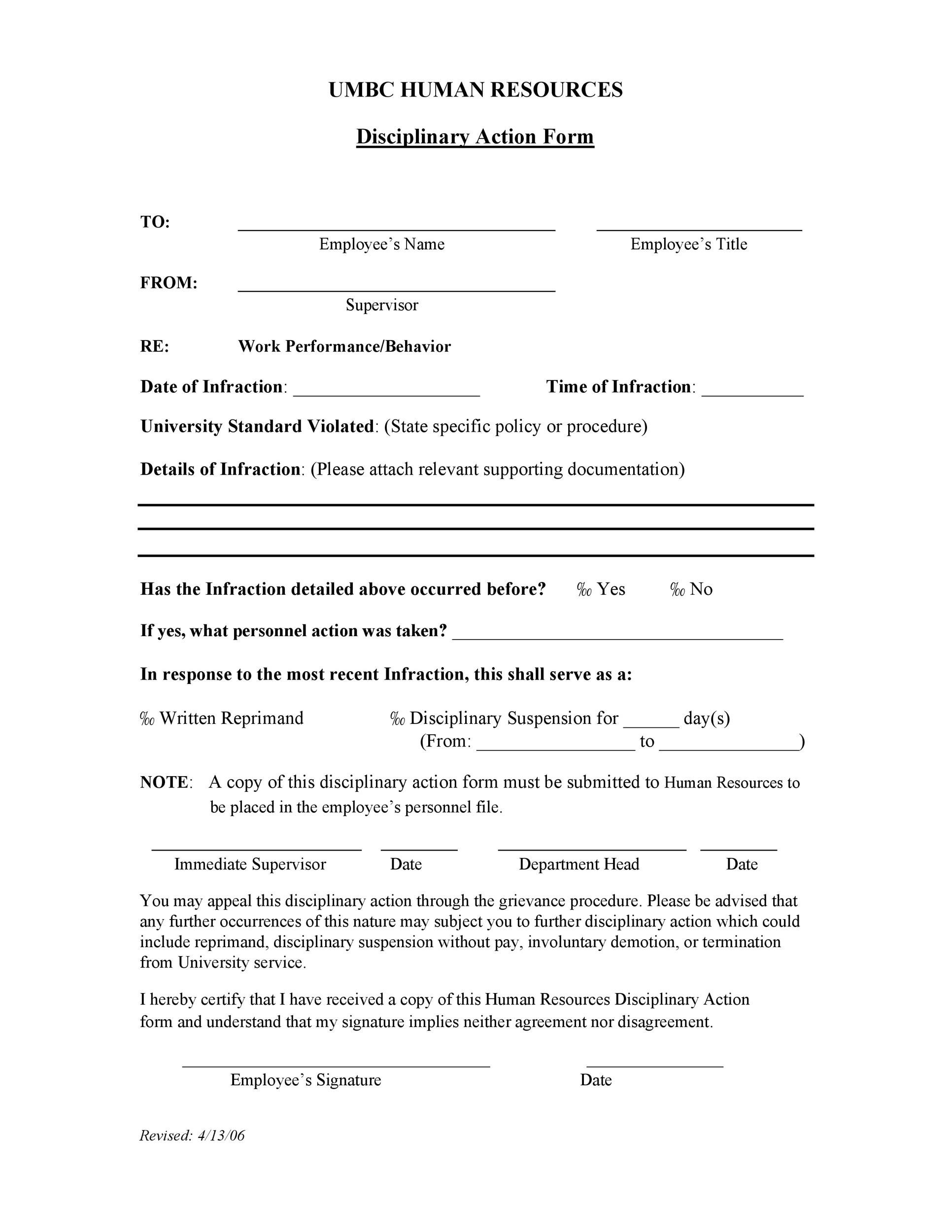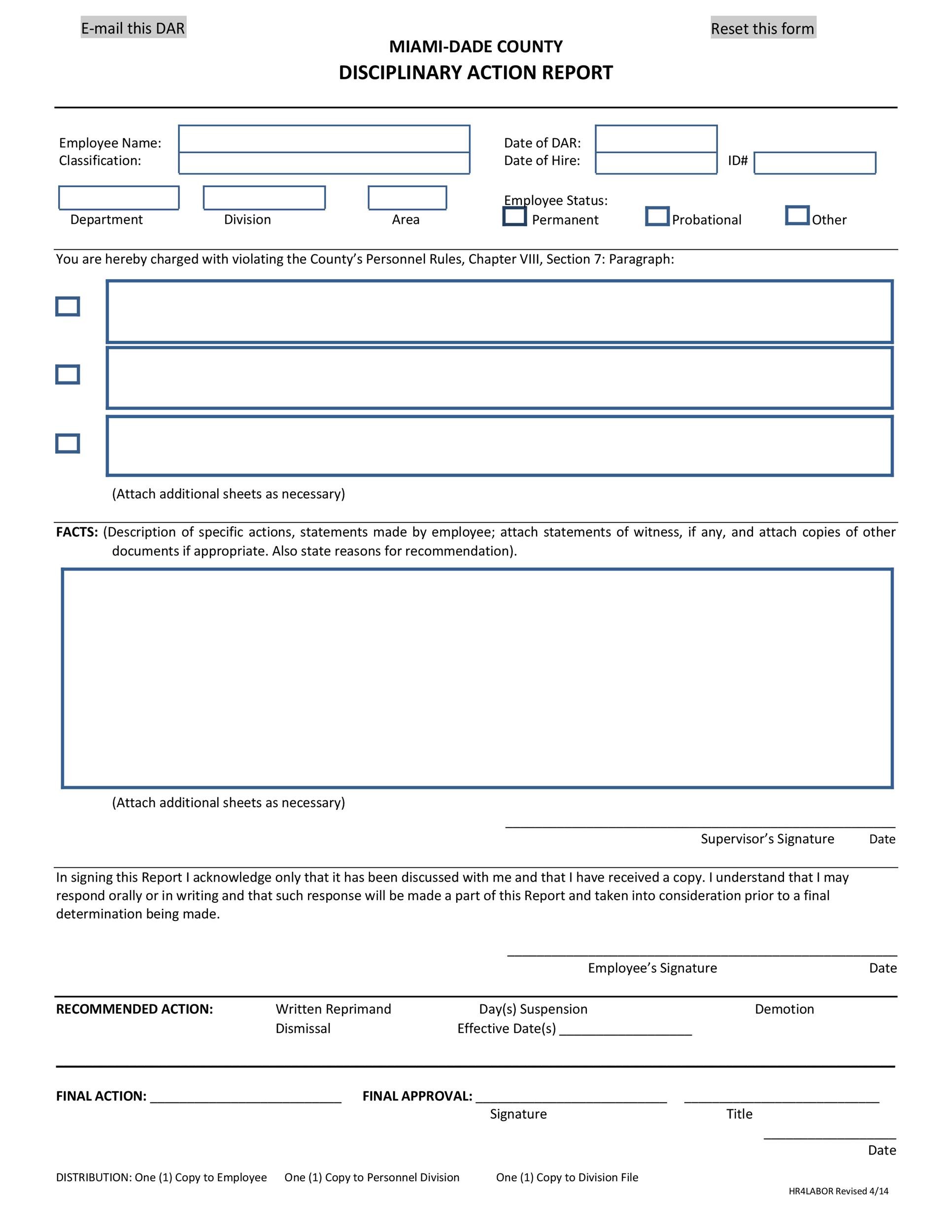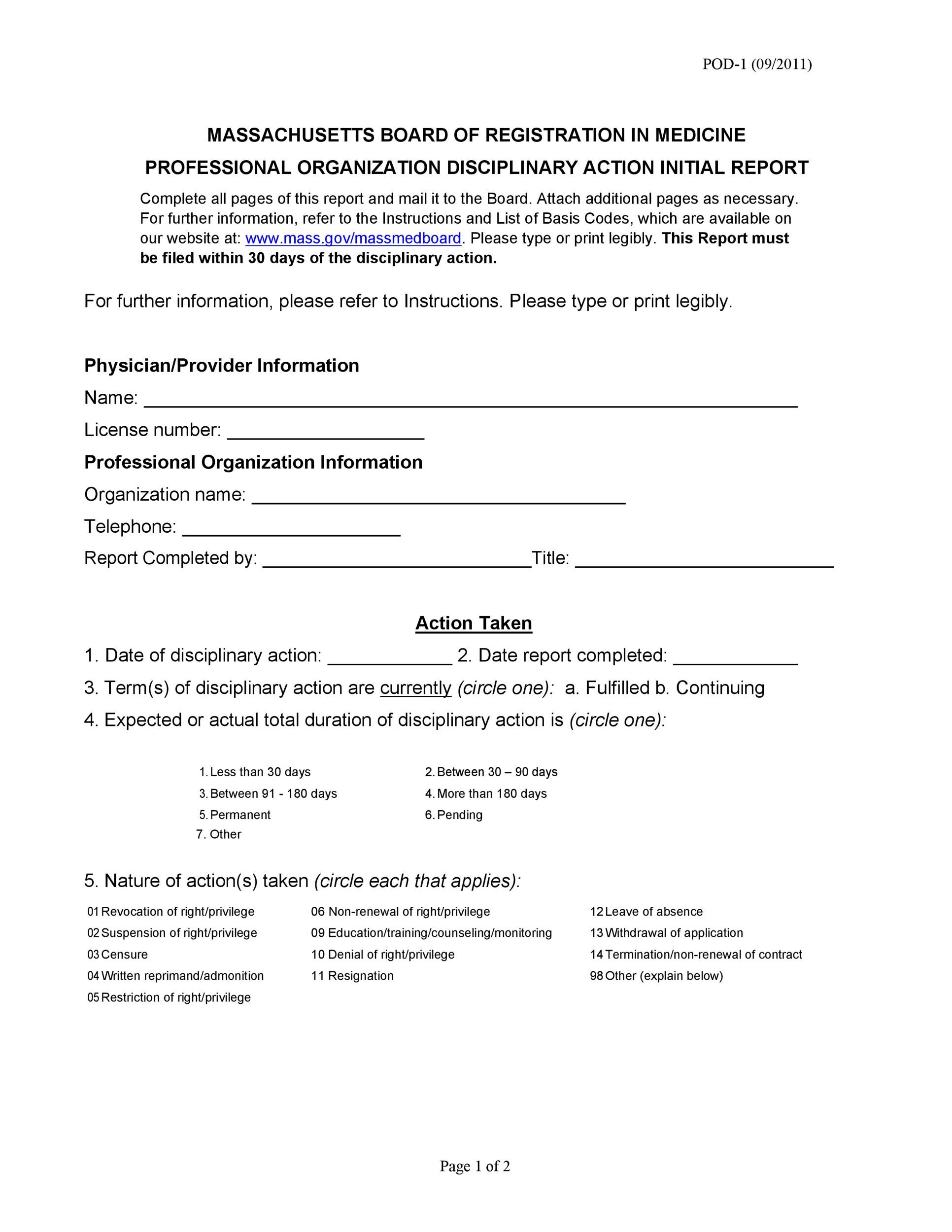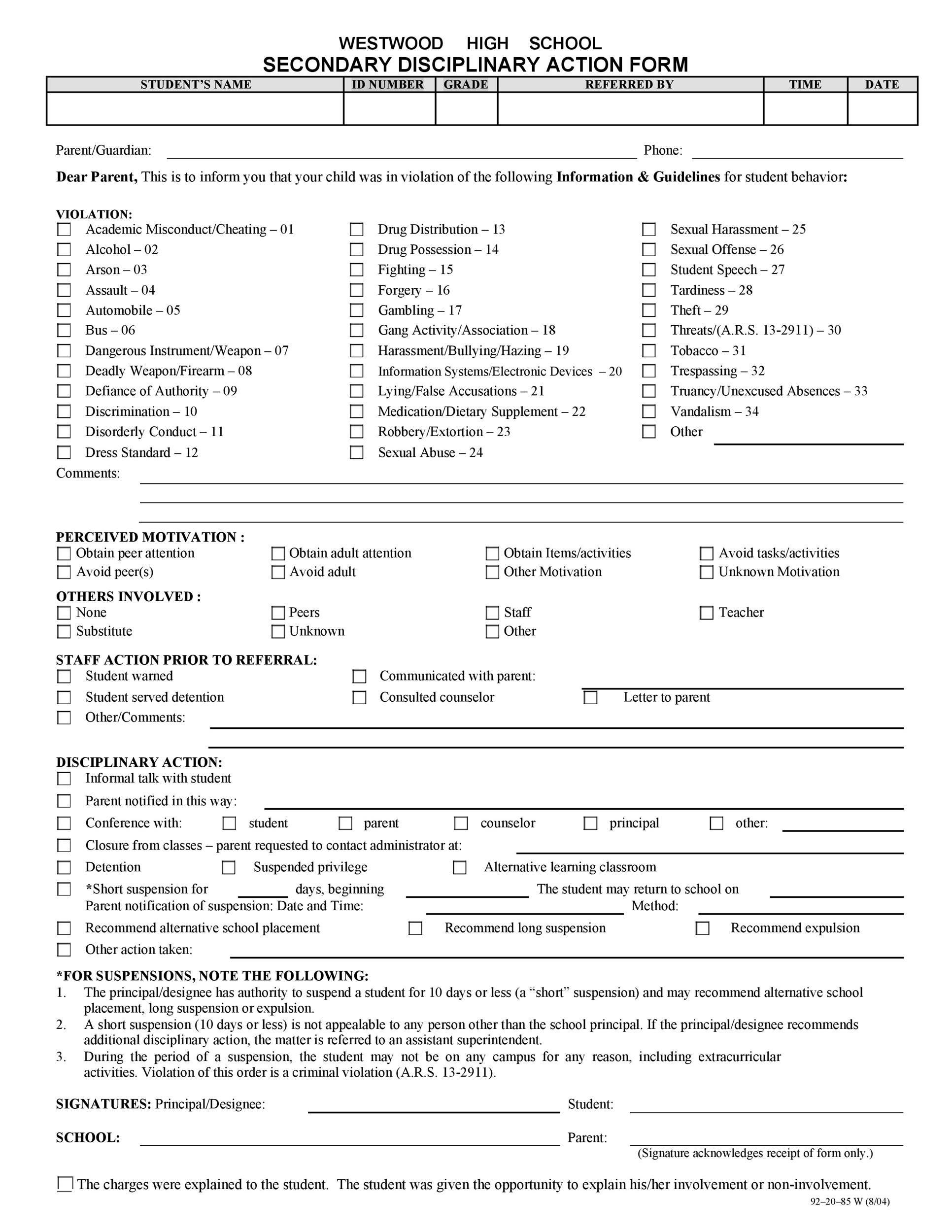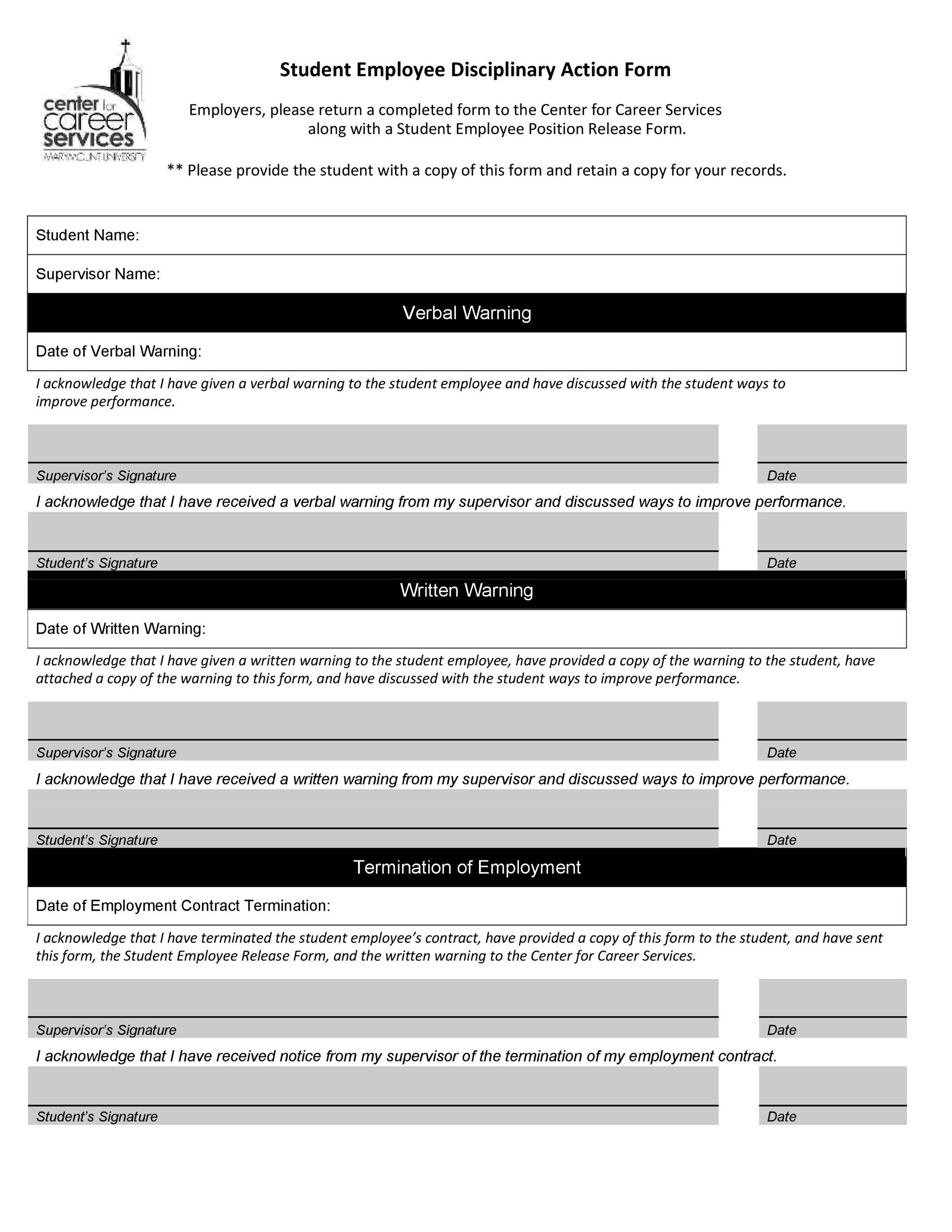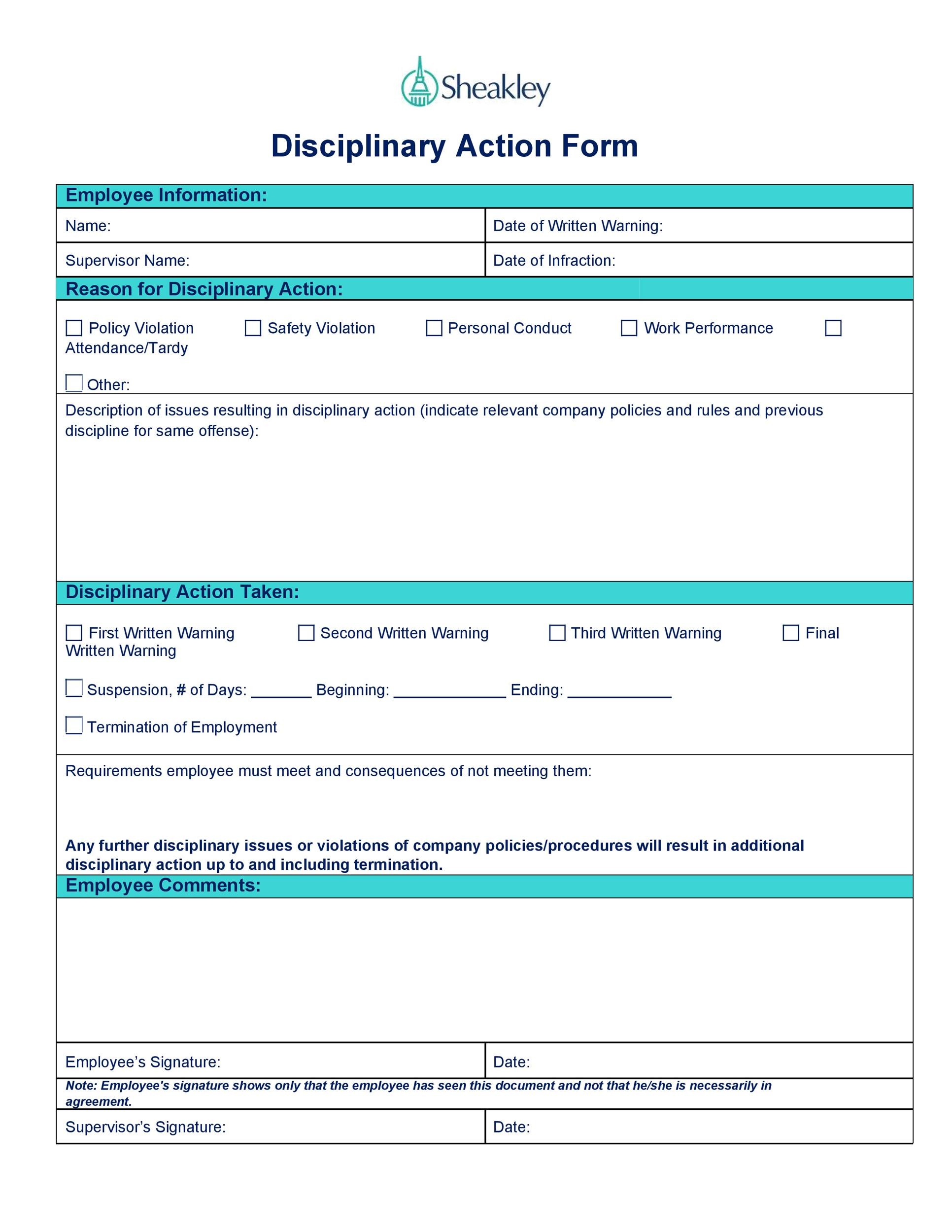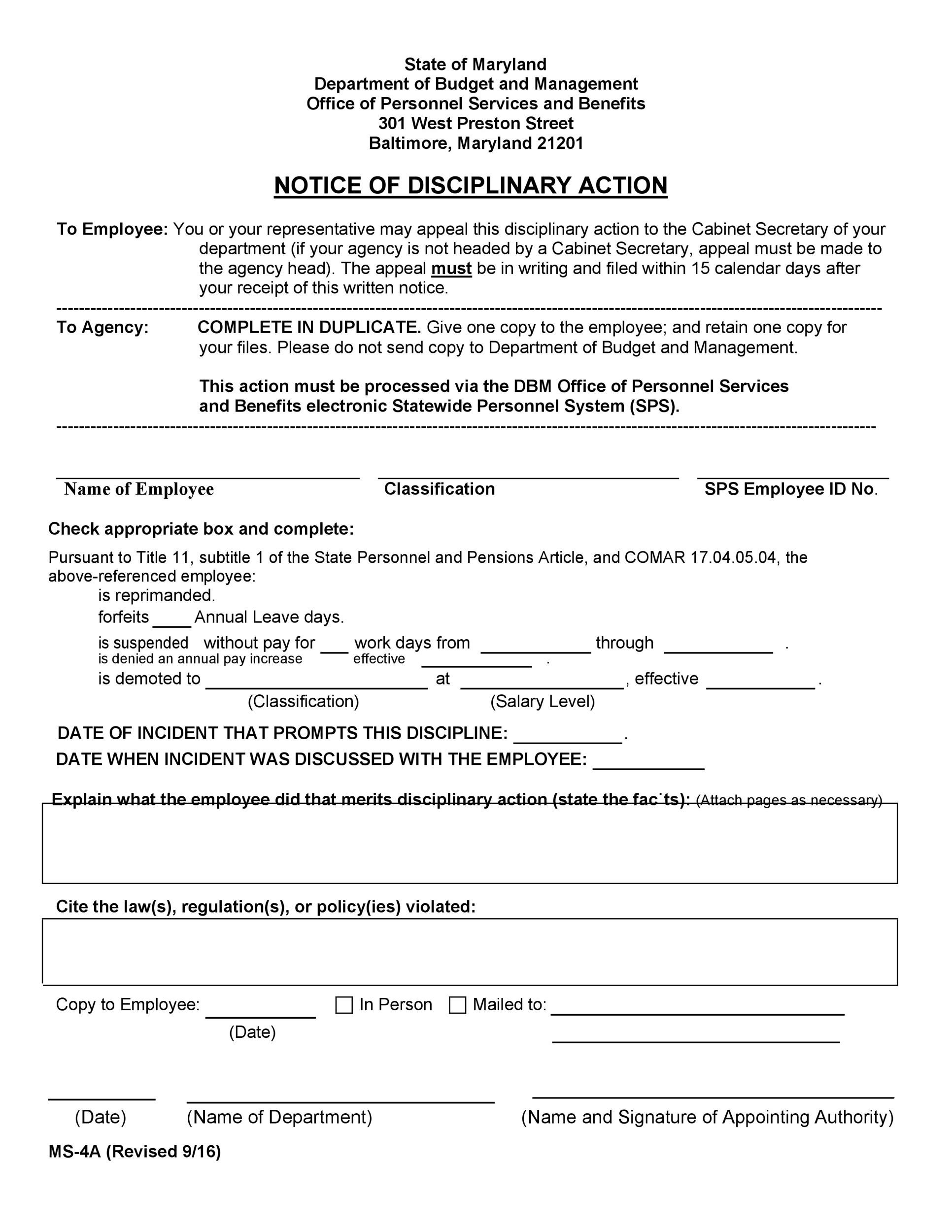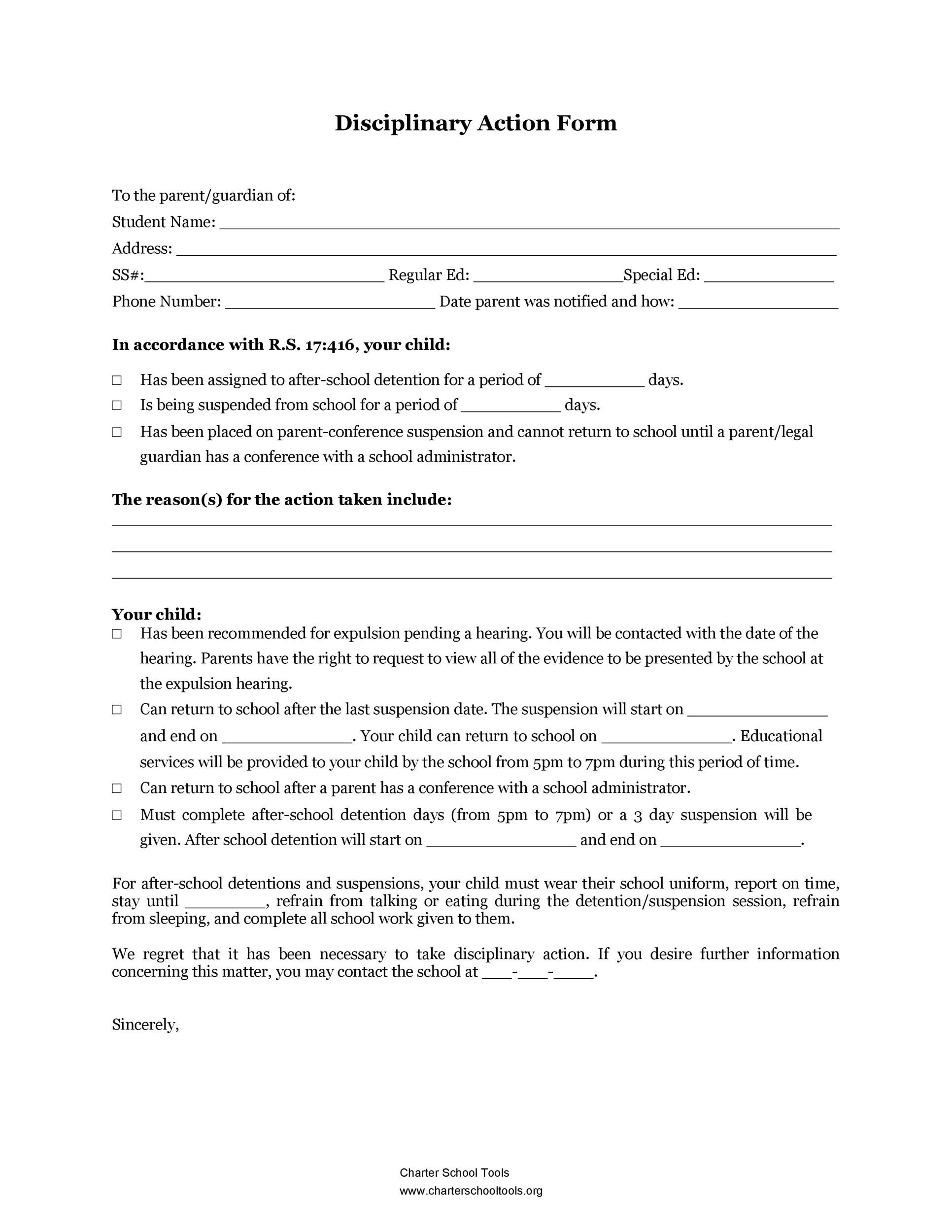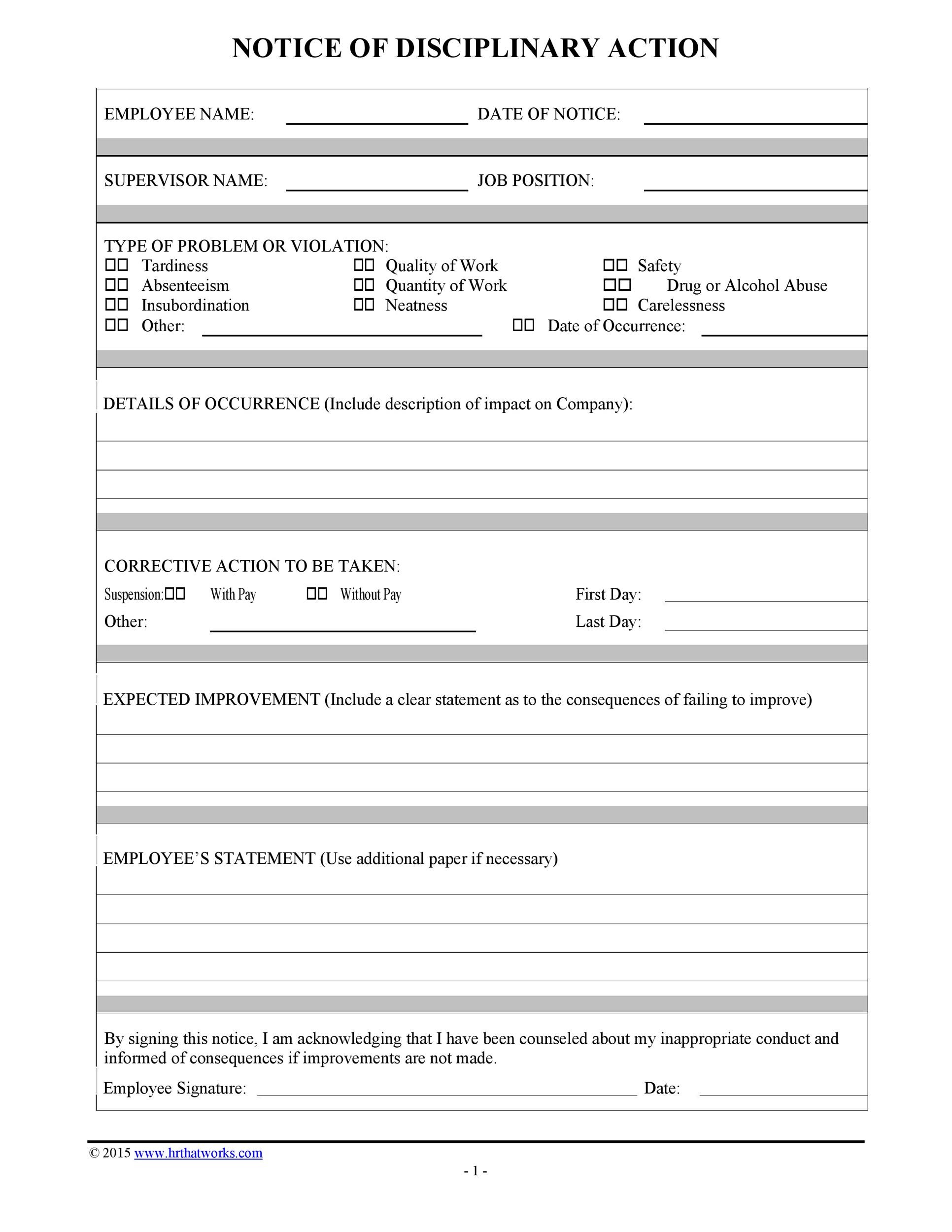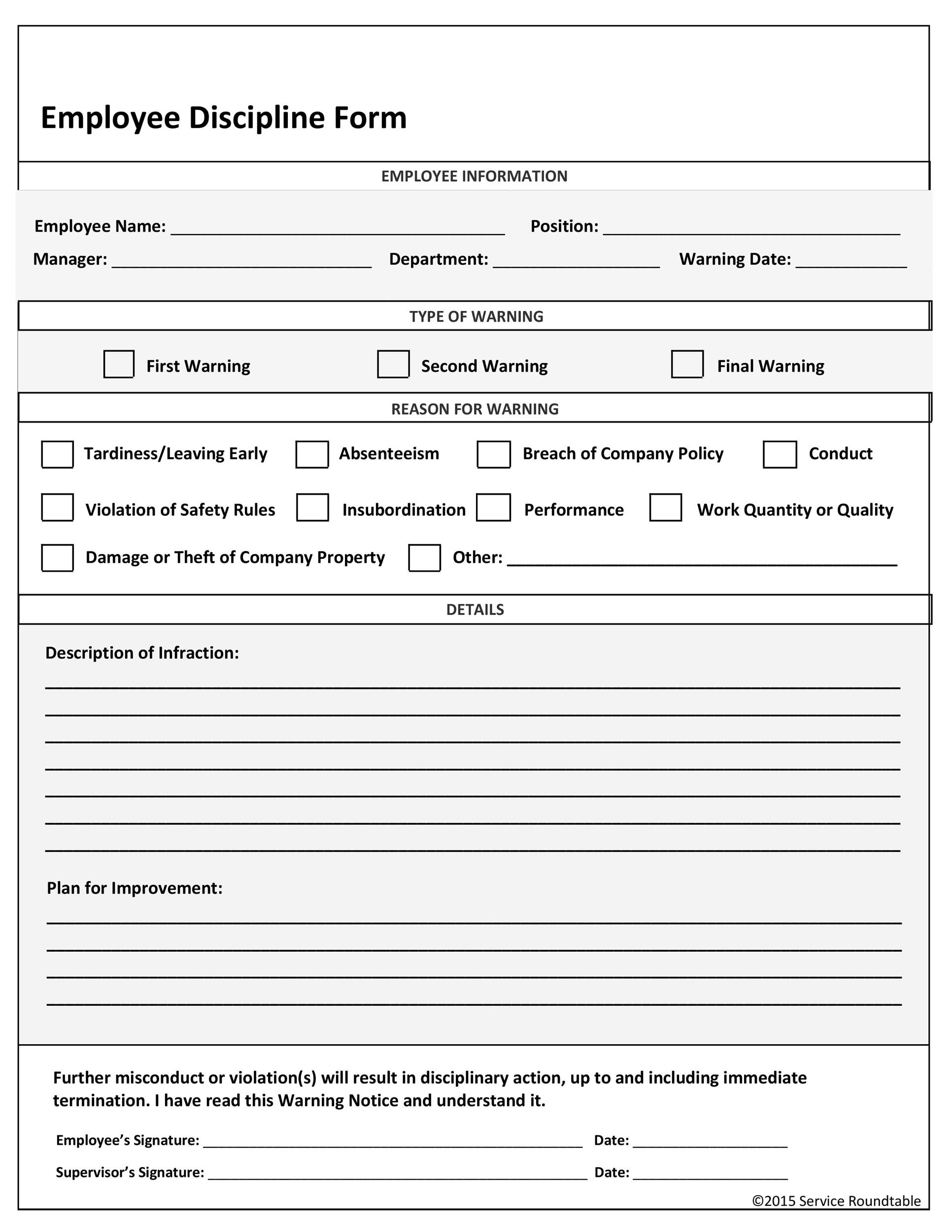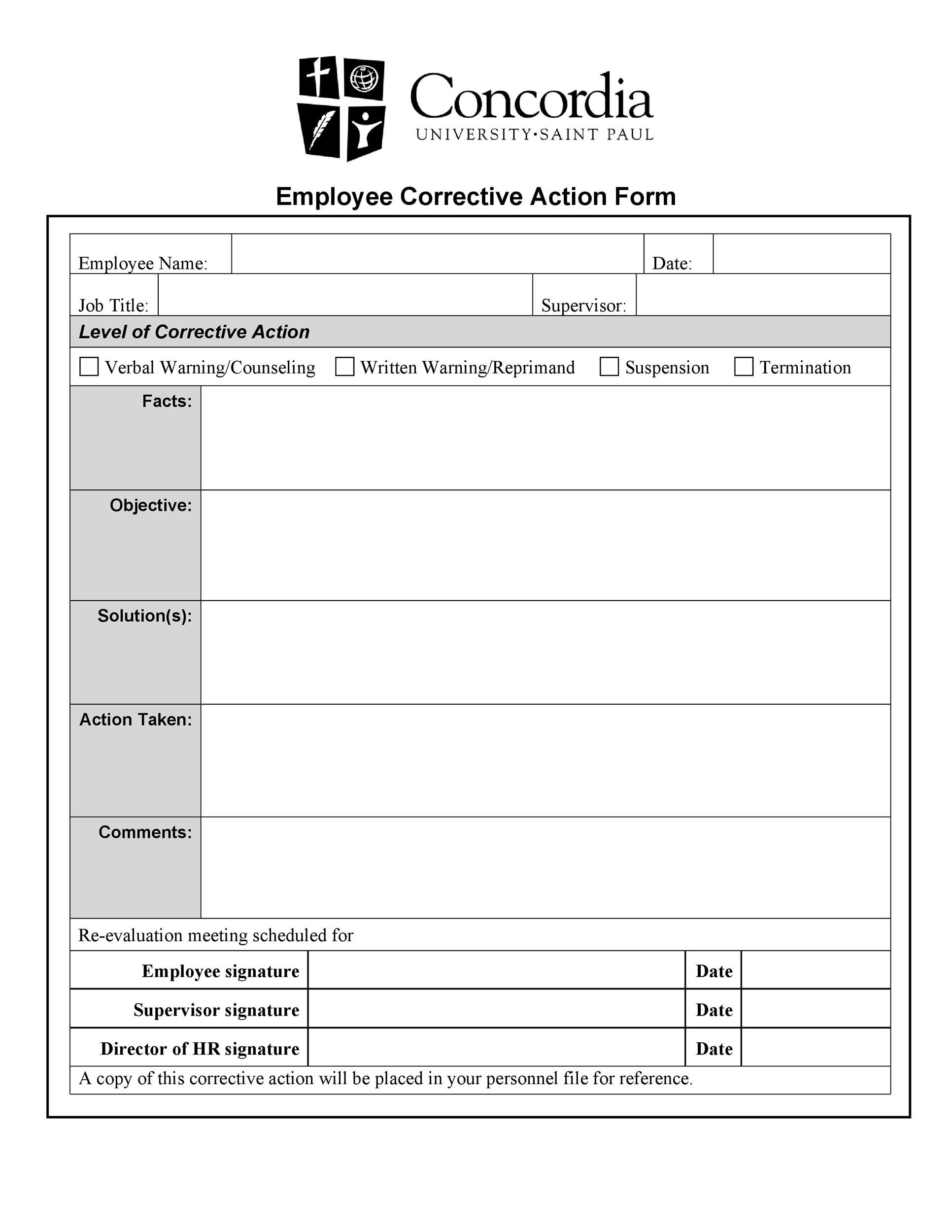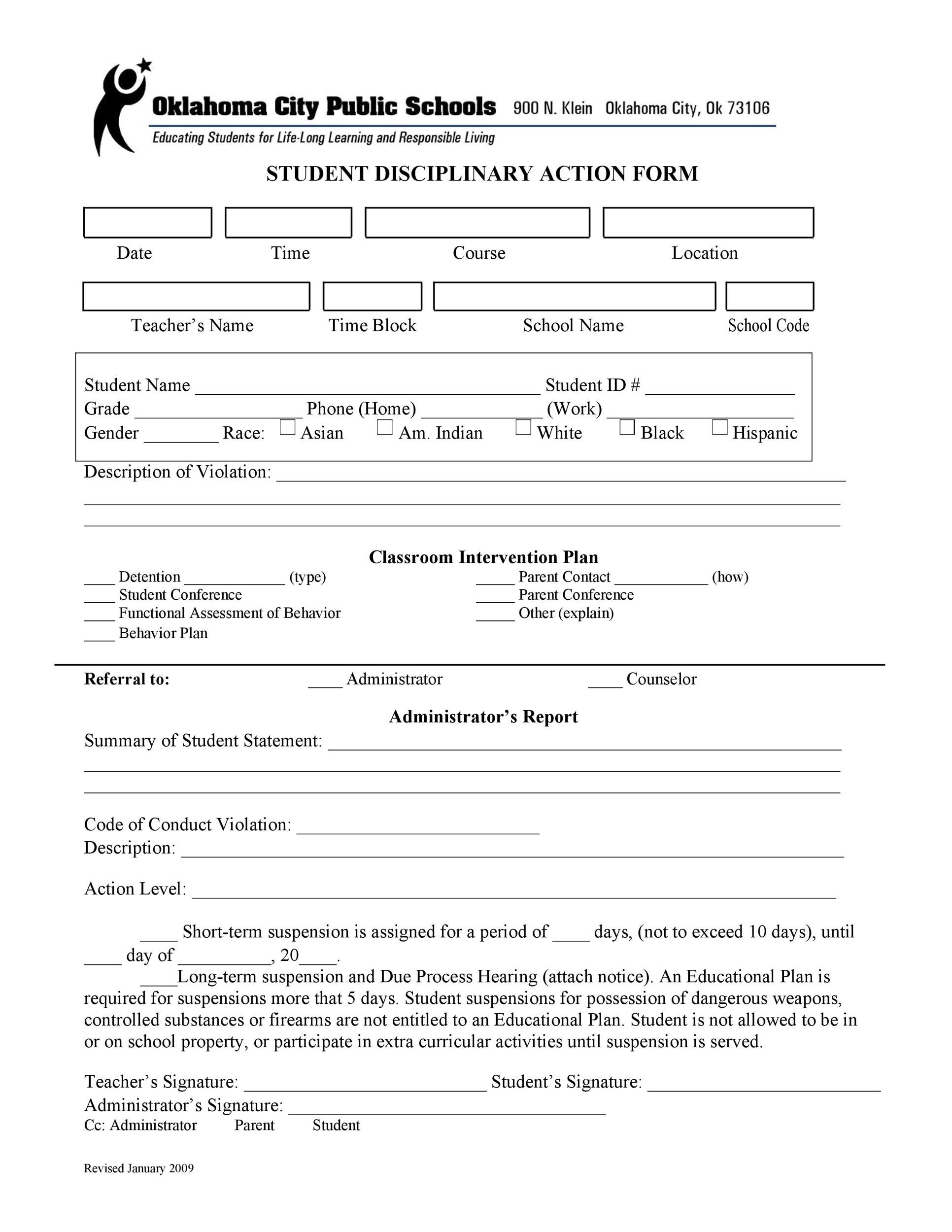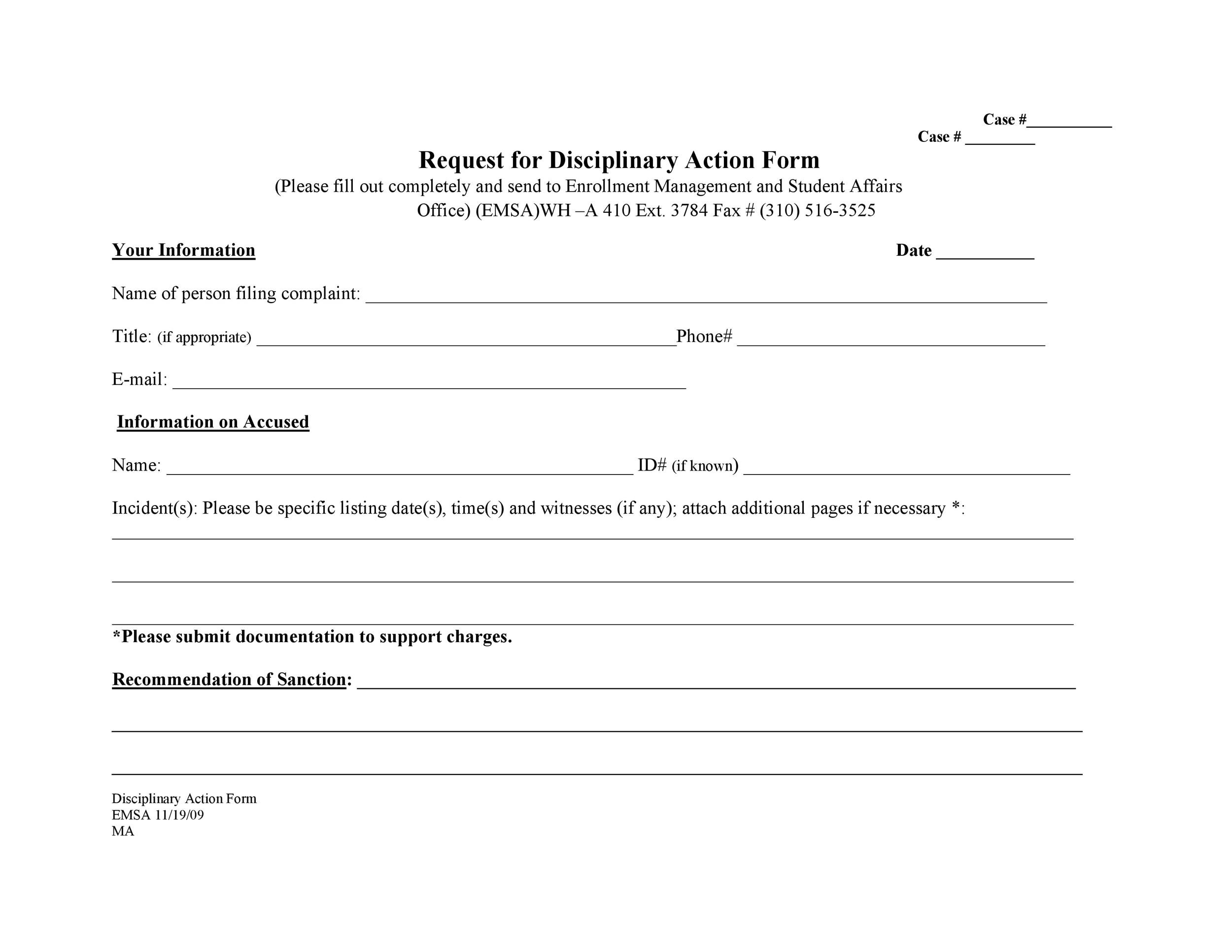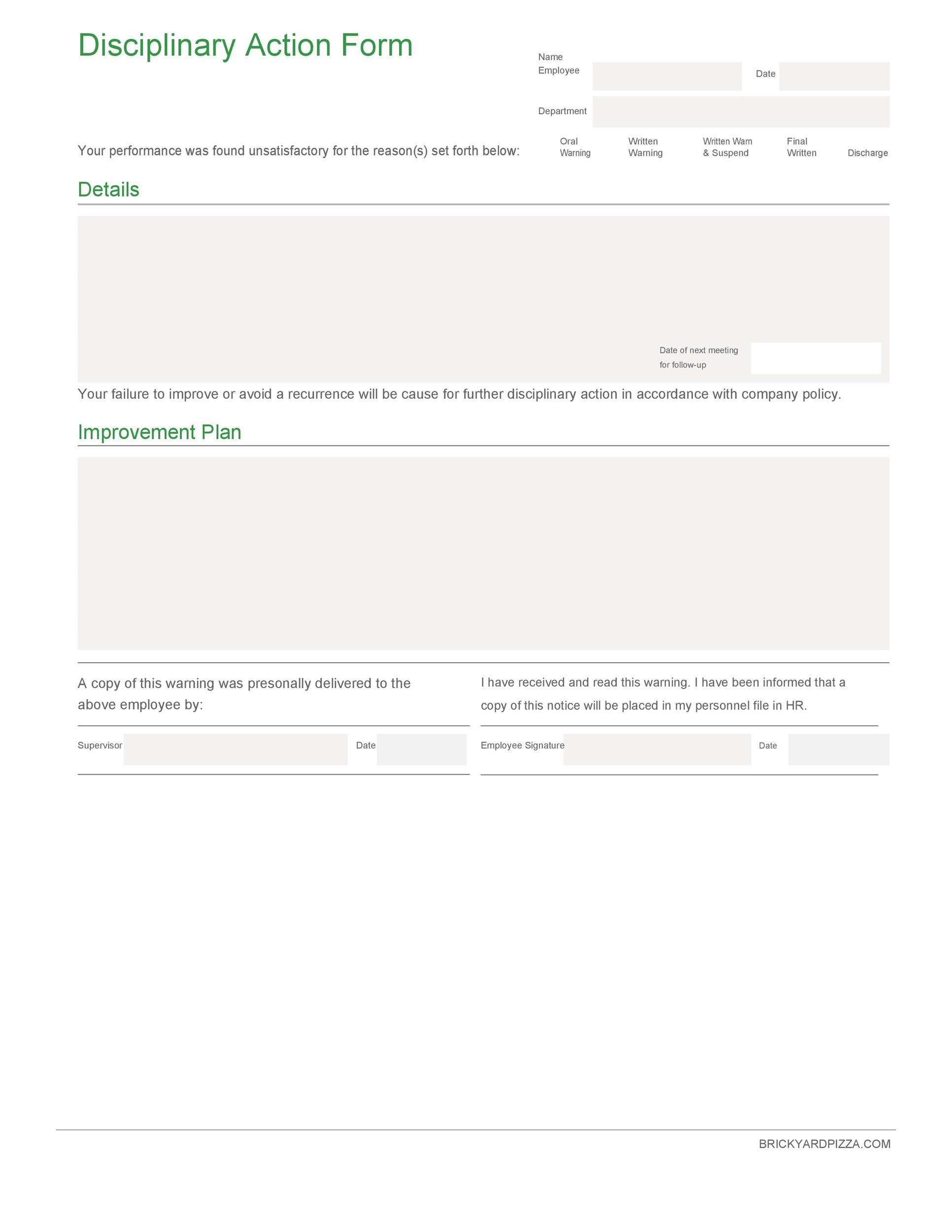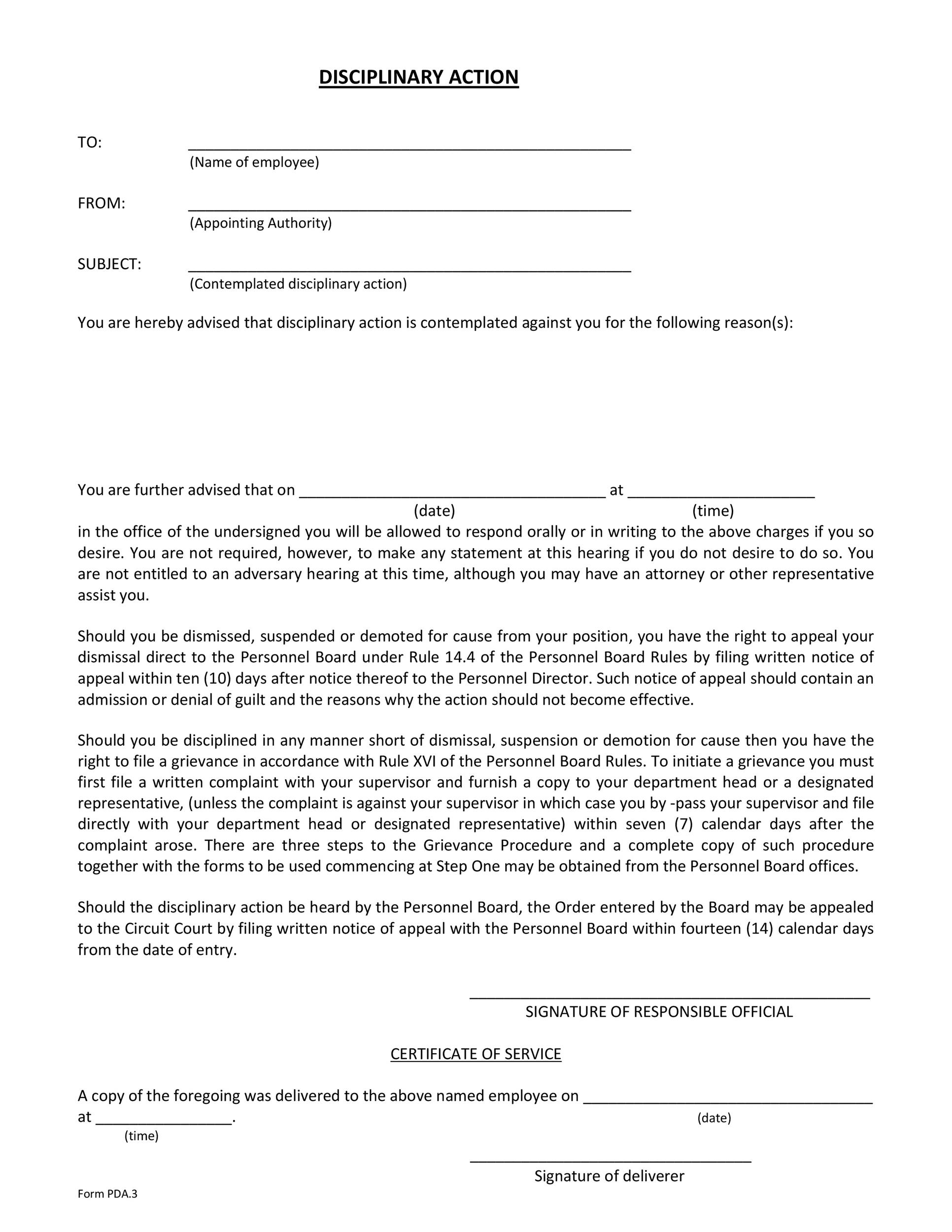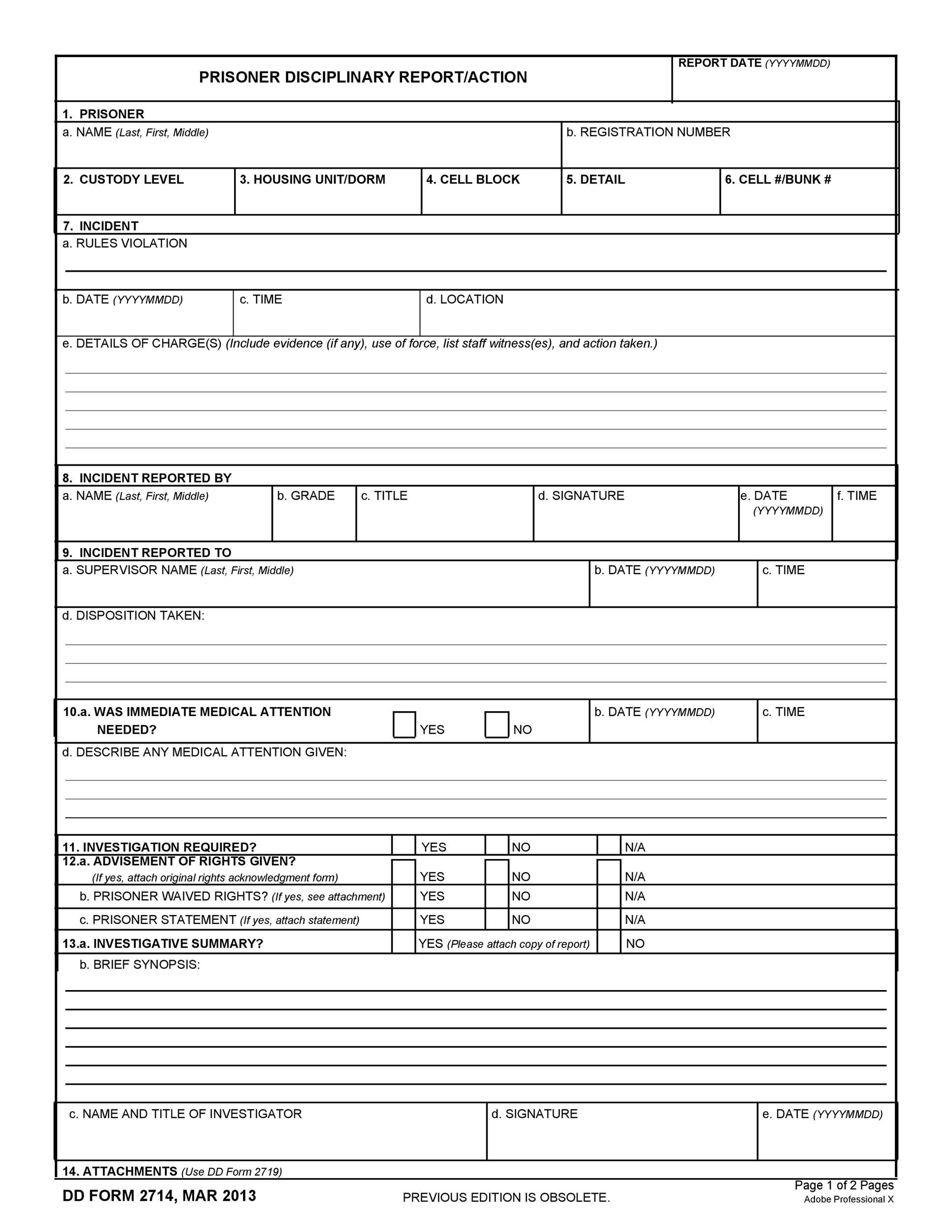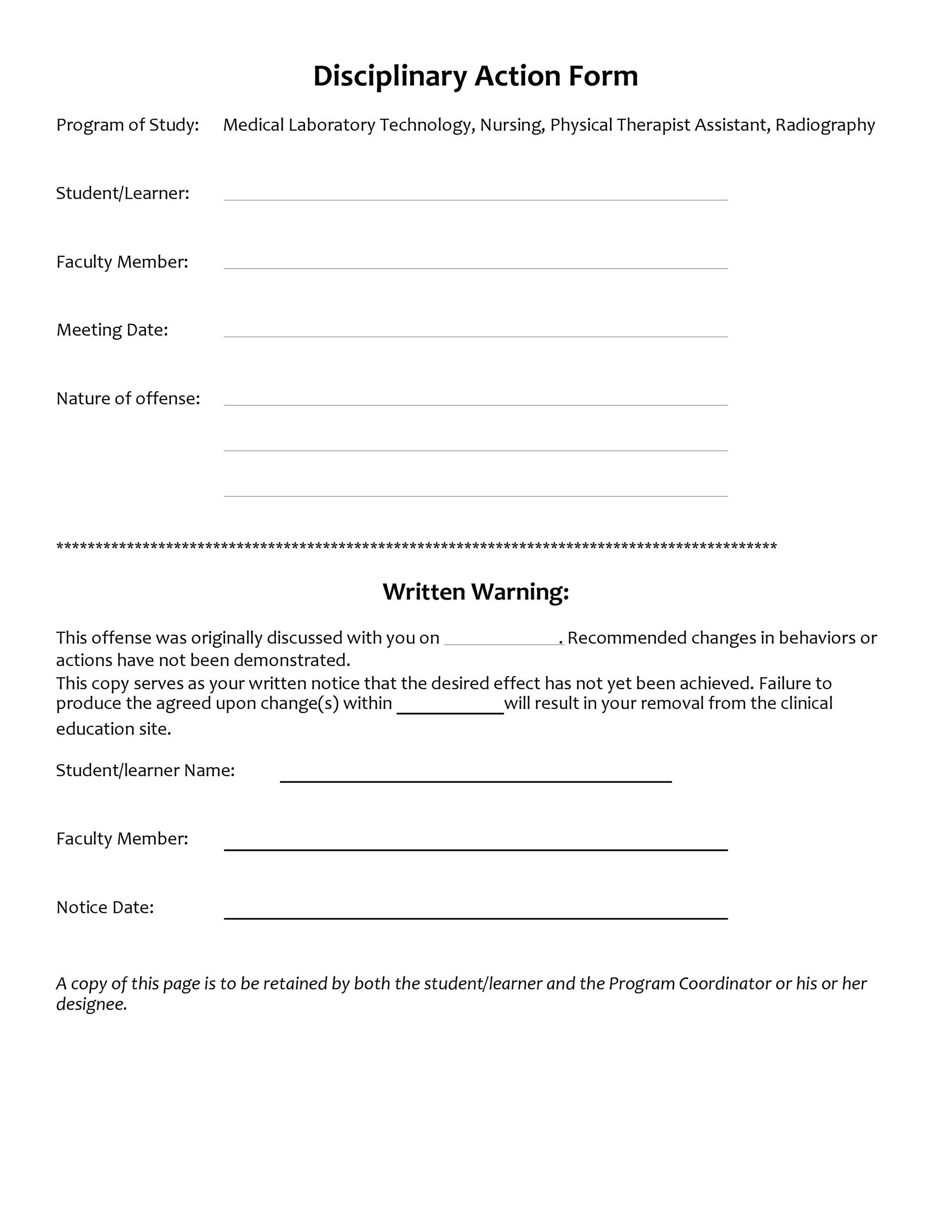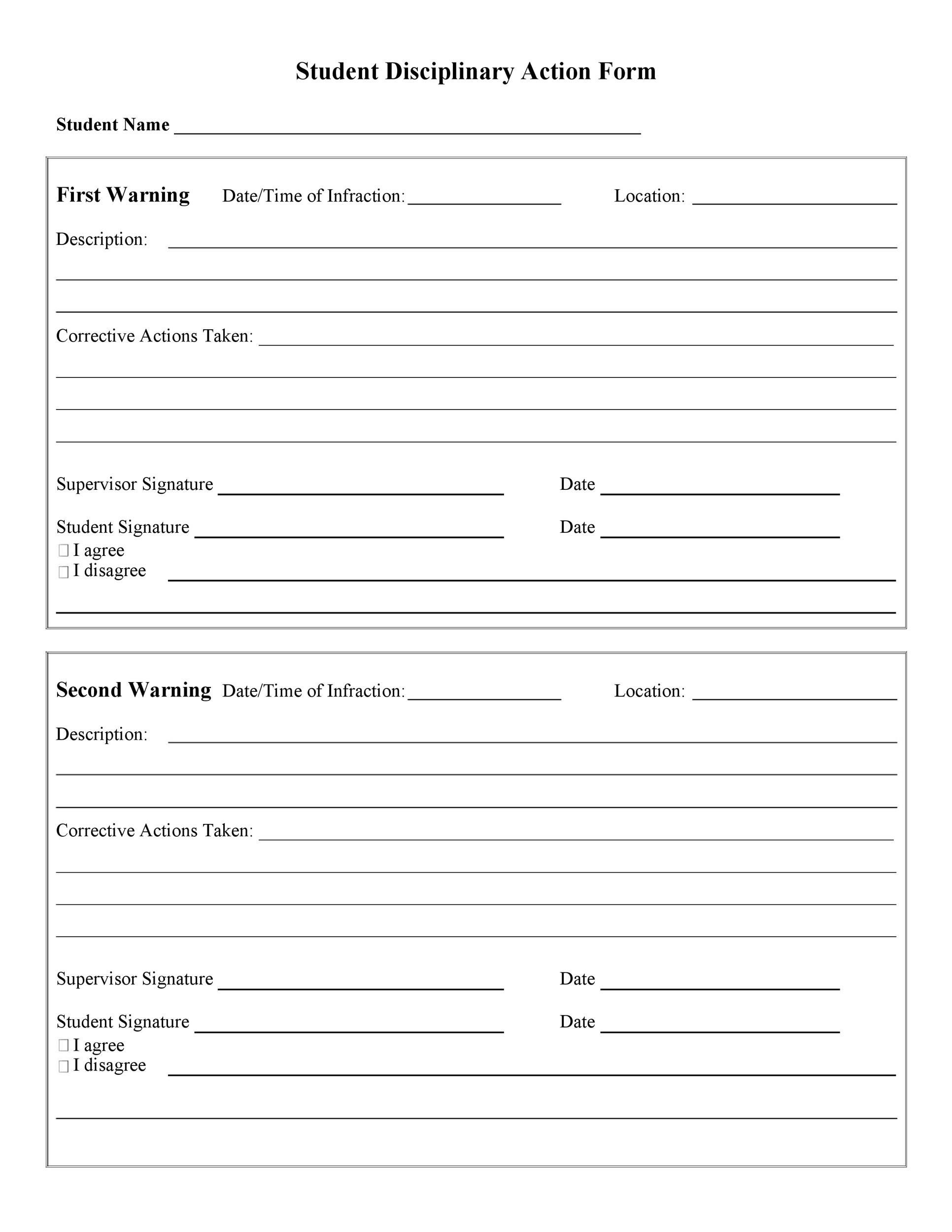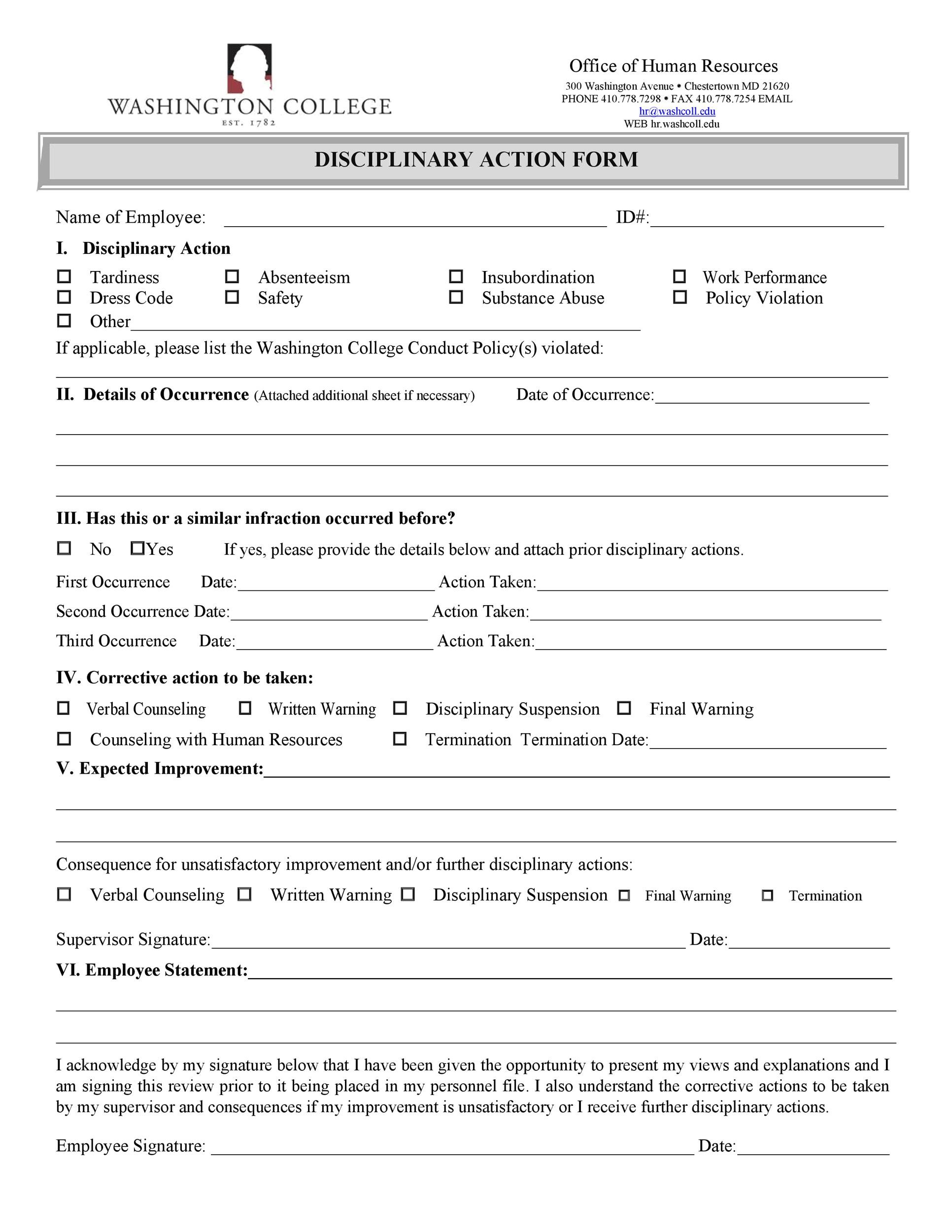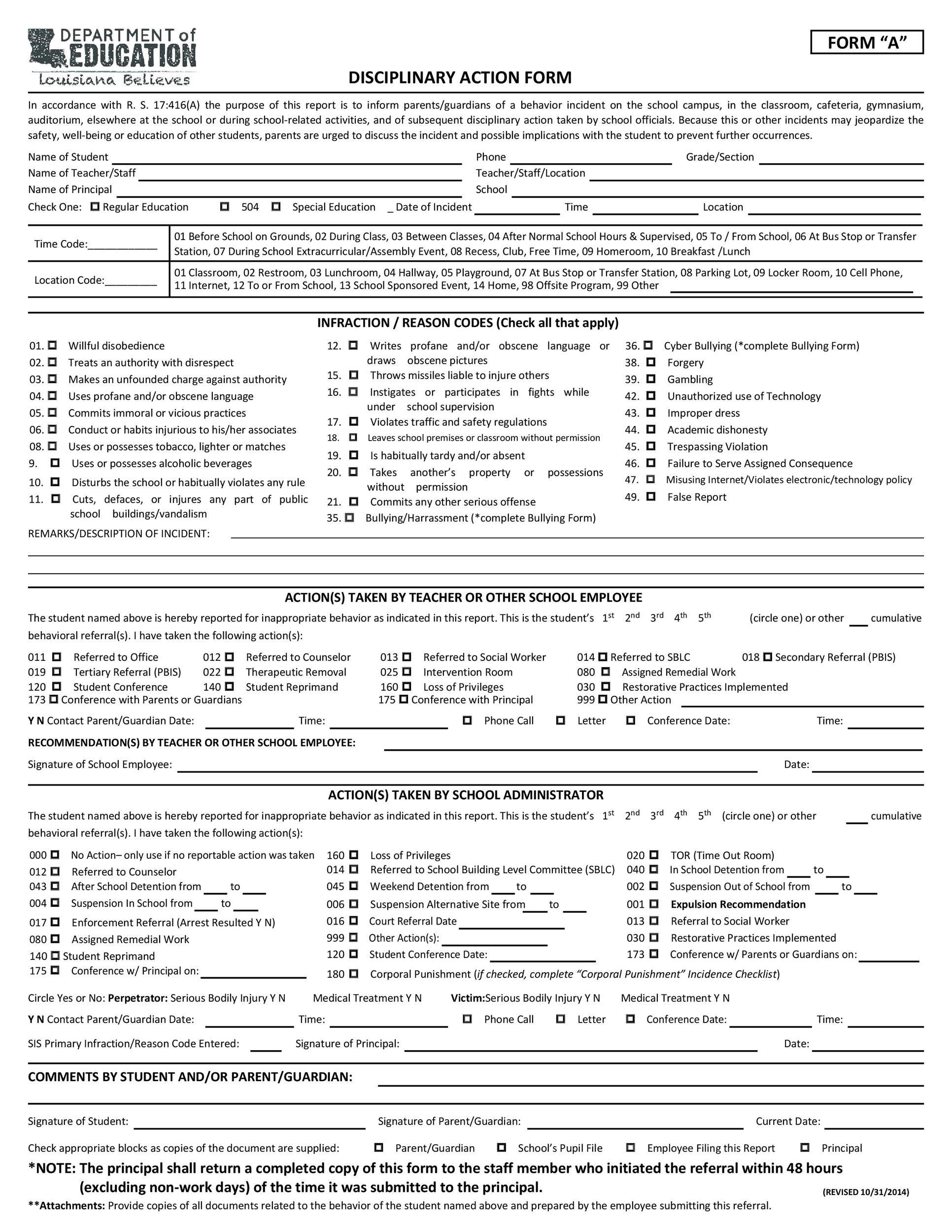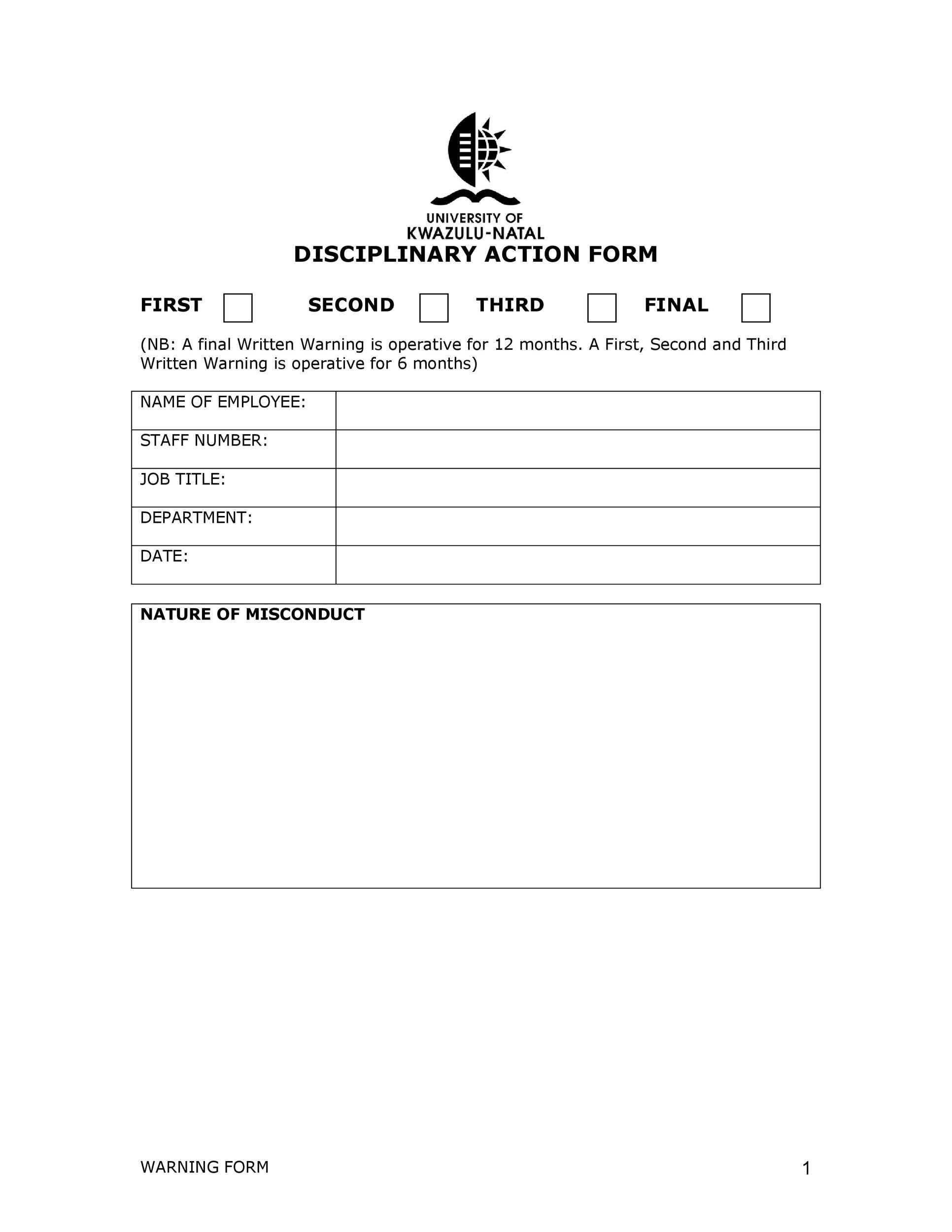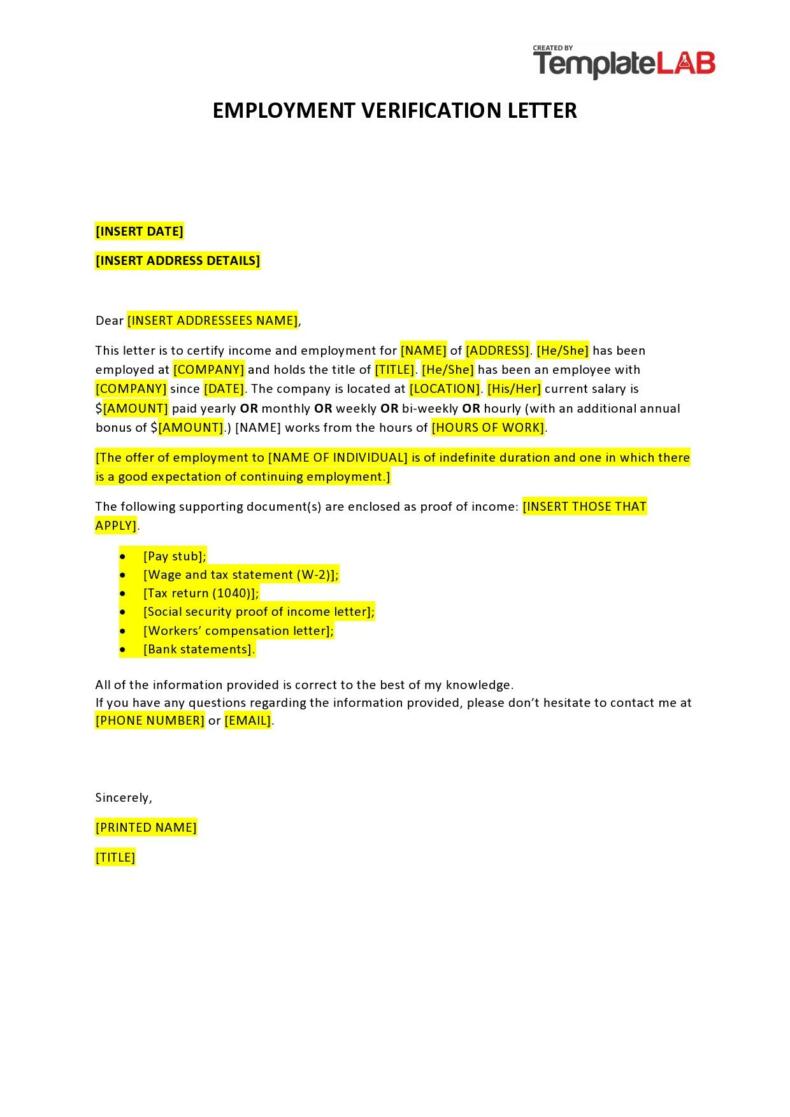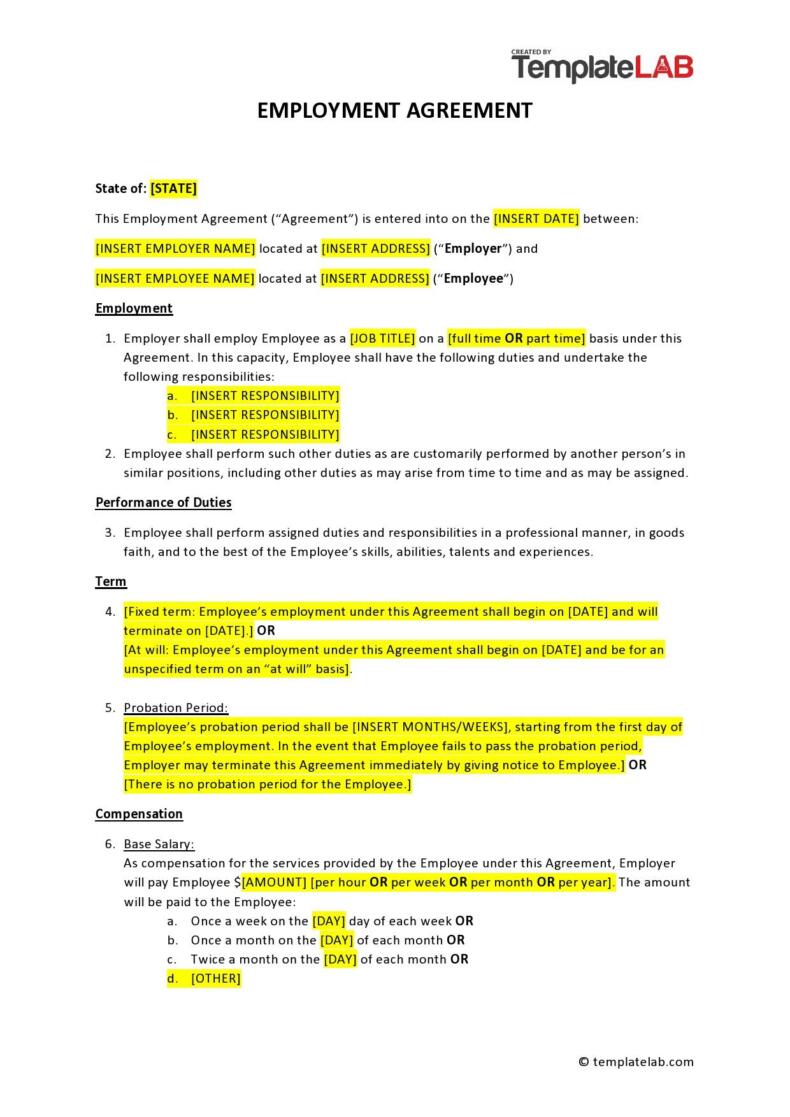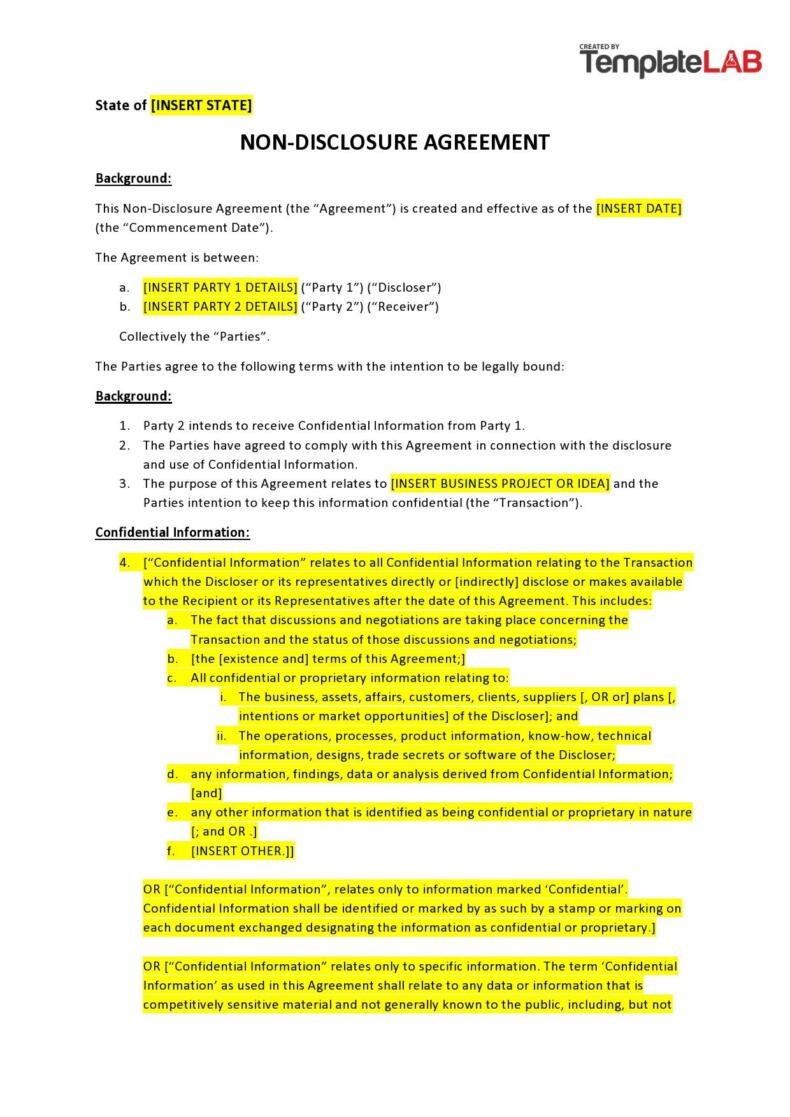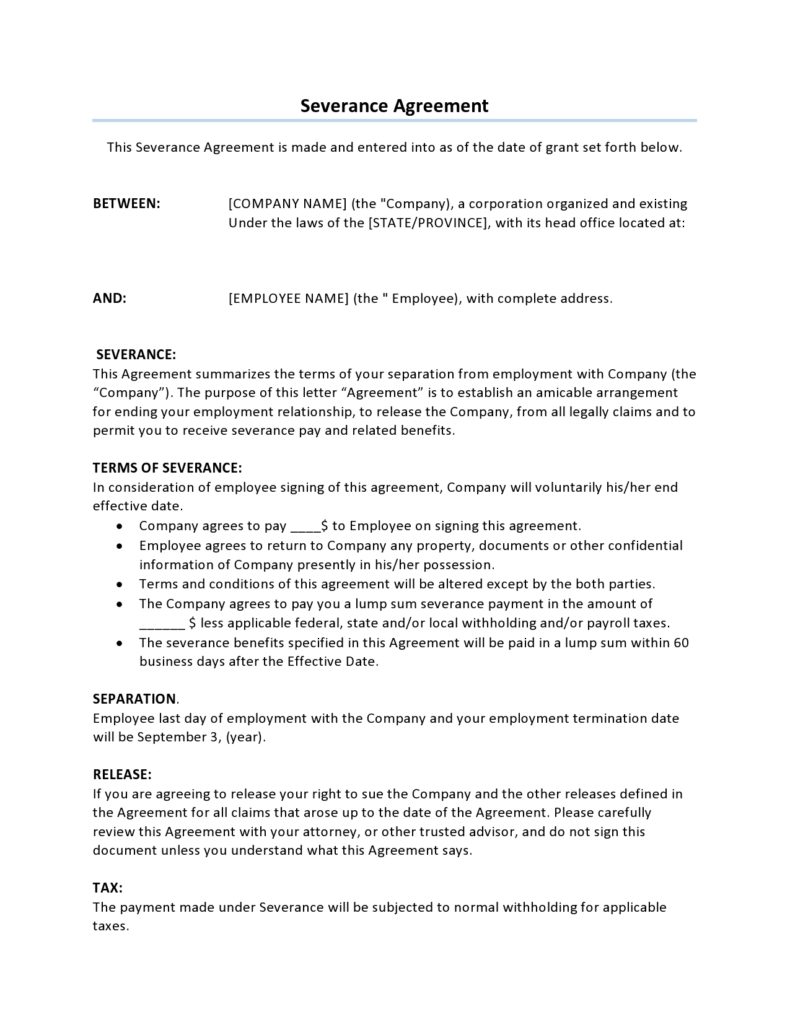Organizations, companies, and businesses at some point would have to deal with employees who have done some form of misconduct, whether simple or serious. In cases like these, disciplinary action needs to be taken to emphasize that these kinds of behaviors are not to be tolerated. This is when a disciplinary action form or a disciplinary action form template is needed.
Table of Contents
- 1 Disciplinary Action Forms
- 2 Purposes of Disciplinary Action Forms
- 3 Kinds of Disciplinary Actions
- 4 When to Give a Disciplinary Action Form
- 5 Advantages of Using Disciplinary Action and Disciplinary Action Forms
- 6 How to Make Your Own Disciplinary Action Form
- 7 Forms of Misconduct That Would Need Disciplinary Action
Whenever an employee is behaving in such a way that it starts to have a negative impact on his/her productivity or work, the negative effects might start spreading to other coworkers or the working environment. This would make the workplace a lot less balanced, efficient and productive.
Making a disciplinary action form template would be essential as you can use it as an effective tool to be able to get the employee’s attention and inform the employee that the behavior which was done is unacceptable. Usually, before an employee discipline form is given, a series of conversations and meeting between the employee and employer would have to take place first.
Disciplinary Action Forms
In these conversations and meetings, the employer or manager would typically counsel the employee in an attempt to eliminate the negative behavior and improve the performance. When the employee continues to perform poorly or perform acts of misconduct, then a disciplinary action needs to be taken. When a disciplinary action form is given to an employee, it is meant to document the performance or behavior as well as give suggestions or ideas for improvement in the hope of getting the employee’s attention in a more efficient way.
In cases when it is necessary to take disciplinary action against an employee in the company, you would have to keep a record of all the steps you had taken throughout the whole process. The record or documentation should contain all the important details regarding the incident/s, all the actions or steps which have been taken as well as the evaluation and the expectations regarding the future conduct of the employee.
It goes without saying that when disciplinary actions are taken against an employee and it went as far as a disciplinary action form being given, the employee, the employer and all other staff members involved should keep the whole incident confidential. There must be no communication between employees regarding the trouble or the incident as it can have more negative effects in the long run.
In this article, you will learn everything that is needed to know about disciplinary actions and employee discipline forms such as the purposes, kinds, benefits and even how to make your own disciplinary action form template.
Purposes of Disciplinary Action Forms
Making an employee disciplinary action form can have a lot of purposes. It would be helpful to know all about these purposes so that when the time comes, you can give out such a form in your company. Here are the different purposes of having and using disciplinary action forms:
To Document any Incidents Regarding Employee Behavior
Whenever there is any trouble in the workplace which is caused by an employee, steps would have to be taken to correct it. The whole process from start to finish needs to be documented so that the management and employee are informed and a record is kept for future references.
To Emphasize Equality and Consistency in Procedures
Whenever misconduct is done in a company or organization, certain actions need to be taken and those actions need to be consistent for all employees. Documenting your actions through the use of disciplinary action forms would ensure that you are not only taking the same steps but you are also keeping a record of those steps. This would serve as strong evidence that you are not discriminating any employee in the workplace in terms of disciplinary actions.
To Use as Reference for Future Actions to be Taken
There are different kinds of disciplinary actions and these would depend on the severity of the misconduct done and the number of times it has been done. When an employee already has an employee disciplinary action form in his record, that would mean that he has already done something wrong and the record can be used to determine the next course of action.
It is important to note that disciplinary actions need to be taken immediately as soon as an offense has been made. This is so that any delay would be avoided and actions to change or rectify negative situations can be done promptly. Now let’s take a look at the different kinds of disciplinary actions.
Kinds of Disciplinary Actions
There are basic kinds of disciplinary actions which all depend on the severity and the situation surrounding the offense. These disciplinary actions are not done all at the same time, rather they are given once for every offense. The different kinds of disciplinary actions would include:
A Verbal Warning with an Explanation
When an employer or a higher ranking employee observes an employee behaving unacceptably in the workplace, he/she may issue a verbal warning to the employee. This is especially true if the behavior done isn’t very serious and the employer doesn’t see the need for more formal steps to be taken.
Verbal warnings are meant to be informal in a way that the employer would only have a conversation with the employee and no written documentation would be made. The emphasis of this would be on correcting the behavior and fixing the situation.
A Written Warning
In cases when a verbal warning has already been given and the behavior still continues or the offense is more serious, then a written warning has to be issued to the employee. The written warning must be completed and duplicated so that one copy is given to the employee and the other copy is kept in the file.
All details regarding the misconduct must be included in the written warning and when given to the employee, he/she must understand it fully and sign it. Without a signature, the written warning isn’t valid.
A Final Warning
When a verbal warning has already been given, then followed by a written warning but the employee is still performing negative actions or behaviors, then a final warning has to be issued. Both written warnings and final warnings have certain validity periods wherein the employee must not repeat the offense within that period.
Final warnings can also be issued to employees who have performed very serious offenses in the workplace. Usually, if nothing changes or the behavior is repeated even after a final warning has been issued, more severe actions will be taken against the employee.
Dismissal
After a final warning is issued, the employee needs to adhere to all company policies and avoid doing any other offenses otherwise he/she will be faced with a disciplinary inquiry.
If after a disciplinary inquiry is done and the employee is unable to justify his actions, he may be dismissed or terminated from the organization after being given notice. However, if the misconduct done is so serious that the law would require dismissal, then no notice will be given before the employee is dismissed.
As you can see, the disciplinary actions actually give employees more than one chance to correct their behavior and improve their performance. However, if they are not willing to do that, it would be best for the company to let the employee go. But when exactly should employee discipline forms be given? Read on to find out.
When to Give a Disciplinary Action Form
Though some companies use memos to issue warnings, it is much more effective to make your own disciplinary action form template and issue those as written warnings when offenses are done in the office.
Disciplinary action forms are usually given to employees as written warnings or final written warnings. When a verbal warning is not enough to change the behavior of the employee or give better results, then a disciplinary action form needs to be given.
This would serve as a record of the offense and the action taken by the management. It would be made by the supervisor or manager then given to the employee and then signed so that it is authentic and the contents are clear to everyone involved.
This kind of disciplinary action makes a bigger impression on employees as compared to verbal warnings, which is why they are given if the offensive behavior or the employee misconduct continues. It is important to issue a warning as soon as the misconduct has been committed so that the employee is aware that he/she is being observed at all times.
Since written warnings and final written warnings are also filed in the employee’s record, then any disputes can be easily fixed by merely referring to the documents kept. There are many advantages to issuing such forms so let’s discuss those next.
Advantages of Using Disciplinary Action and Disciplinary Action Forms
Making use of warnings in the form of disciplinary action forms have a lot of advantages. If you haven’t yet, you can start thinking about employing different disciplinary actions especially when your employees are beginning to take you for granted and their behaviors are getting out of hand. All kinds of companies and businesses would benefit from using disciplinary actions starting with verbal warnings.
Here are the advantages of using disciplinary actions and employee disciplinary action forms:
It Gives Clarity to Office Policies and Procedures
Often employees take office policies and procedures for granted especially when it comes to disciplinary actions. Employees tend to keep on performing simple offenses when they feel like there are no consequences to their actions. Making use of disciplinary actions every time an employee commits an offense would make the consequences of such actions clear – to the employee and all other employees who may be thinking of crossing the line themselves.
It Displays Fairness in the Workplace
When disciplinary actions are done, and all the same procedures are done for all employees who are committing the same misconducts, then the employees would see that the management is consistent and fair with everyone. This would give a more positive atmosphere in the workplace and may actually motivate people to change for the better.
It Promotes Better Relationships Between Employees and the Management
Rather than terminating employees when they commit offenses right away, issuing warnings give them a chance to change their ways and improve their performance. It would give the employer a chance to have a conversation with the employee about the misconduct and suggest ways to change negative behaviors and improve the performance.
Giving employees warnings rather than terminating them for minor offenses would raise their morale in a sense that they would feel more secure knowing that even if they make mistakes, they would still get a chance to change for the better. The forms would serve as evidence that the employer had given the employee a chance to change.
These are the different advantages of using disciplinary actions to correct employee misconduct. Giving them a chance to change would be beneficial to the company so that the overall productivity would increase. So now let’s move on to learning how to actually make a disciplinary action form template.
How to Make Your Own Disciplinary Action Form
There are many templates available online for these kinds of forms but if you are planning to make one, specific for your company or organization you could start from scratch. Different templates would contain different information and you can choose whether you’d like a shorter, more concise form or a narrative form which would be more detailed.
Here are tips and steps for making 2 types of templates, which you can do for yourself:
A Checklist Type
- Open the software of your choice and format your page. Set the margins and the fonts you plan to use. Paste your company logo on the page and type the title at the top.
- Give a space for the name of the employee along with the employee’s job title and department. Also, place a space for the name of the employee’s direct supervisor as he/she will most likely be the one making the warning.
- Make a list of the possible violations. Place a box in front of all the violations so all that would need to be done is check what applies. Place a title like “Type of Violation” or “Kind of Violation” at the top then you can use simple words in the list such as attendance or tardiness, quality of work, safety and such so the supervisor can check the box next to the violation the employee has made.
- Place a space for the details of the violation such as date, time and place it occurred.
- Then would come a place for the statement of the employee regarding the offense and a statement of the employer or direct supervisor regarding the offense.
- Place a space for the decision of the management or the action which is to be taken because of the employee’s offense.
- Finally, place a space for the employer or manager as well as the employee to sign and the date.
A Narrative Type
- Just like with the checklist type, the first thing to do it so open the software of your choice and format your page. Set the margins and the fonts you plan to use. Paste your company logo on the page and type the title at the top.
- Right below the title, place a space for the employee’s name, job title, department, the direct supervisor’s name and the date when the offense had happened.
- Place a space for the type of offense or violation which had been done. In this type of form, the offense would have to be written specifically and not just ticked from a list of options.
- Then comes the details of the violation – date, time and place.
- Below that, you can create boxes to write the employee’s whole statement and a separate box for the supervisor or employer’s whole statement as well regarding the incident or the offense which had been made.
- Place another box which would contain the warning decision as well as a space for the name, signature, and date of the person who had made the warning decision.
- After that, you can include some space to specify whether the form serves as a written warning for the first, second or third offense.
- Before placing the space for the employee to sign, include a statement which would declare that the employee had understood all the contents of the form and agrees with what has been written.
- Finally place a space for the names, dates, and signatures of the employee, the person who prepared the document and the direct supervisor of the employee.
Remember to make a copy of the document so that you can furnish the employee with one of the copies and place the other copy in the employee’s file. You can make other copies as well if needed. Now let’s take a quick look at different forms of misconduct which would need disciplinary action.
Forms of Misconduct That Would Need Disciplinary Action
Now that you know how to make a template for your own employee discipline form, let’s take a quick look at the different forms of misconduct.
Very Serious Misconduct
Obviously, these offenses are so severe that action must be taken immediately to correct them. Some of these offenses can include, but are not limited to:
- Being absent or leaving the premises without permission.
- Illegal holding of other people’s possessions or property.
- Use of liquor or other illegal substances while on duty or in the office.
Serious Misconduct
These kinds of offenses may be less serious but would still require disciplinary action. Some of these offenses would include but are not limited to:
- Sleeping while on duty or providing poor services.
- Using indecent or insulting language while on the premises.
- Failure to follow safety procedures or use safety equipment.
Less Serious Misconduct
These kinds of offenses are minor offenses and are usually dealt with verbally first. Though minor, employers or supervisors should still call the attention of the employee who has done them so that the offenses won’t be repeated in the future. Depending on company policies, these kinds of offenses could be as simple as making inappropriate jokes in the workplace or performing other tasks unrelated to work while on duty.

